The Impact of Media on Society Cause and Effect Essay
- To find inspiration for your paper and overcome writer’s block
- As a source of information (ensure proper referencing)
- As a template for you assignment

Introduction
Role of media in the society, impact of media on society, works cited.
Media is one of the world’s power and force that can not be undermined. Media has a remarkable control in almost every aspect of our lives; in politics, social and cultural or economic welfares. Perhaps the best analysis of the impact that media has played in the society is through first acknowledging its role in information flow and circulation.
It is would be unjust to overlook the importance of information to the society. Information is the significant to the society in the sense that, all that happens in the society must be channeled and communicated among the society’s habitats. Without media, the habitats or else the population will be left clueless on what is happening or what is ought to happen.
From another perspective, the society benefits from the media in a number of ways and as well it derives a lot of misfortunes from the society. However, regardless of the impact that is made by media on the society, the media remains to be one of the strongest forces that influence the pillars of the society. This essay paper highlights the impacts that media has continued to assert on the society either in a positive or in a negative manner.
The most common role that media has played in the society has been; to inform people, to educate people and sometimes to offer leisure or entertainment. The role of media in the society is stretched back in the ancient traditions when, there were approaches on which media role in the society was perceived. Some of these approaches included a positive approach, critical approach, production approach, technological approach, information approach and finally a post colonial approach.
A positivist approach assumed that media’s role in the society was to achieve predetermined objectives of the society, usually from a beneficial perspective. The critical approach assumes that media is pertinent can be used in struggle for power and other issues in the society that were preceded by a spark of a new or old ideology.
The production approach is that media plays a greater role in society by providing a new experience of reality to the masses by providing an avenue of new perceptions and visions. The information approach assumes that the key role of media in the society is to provide information channels for the benefit of the society (Fourie178).
With the above roles being achieved in one of the most remarkable means over centuries, media has some solid impacts that have been imprinted on the society. Some of these impacts and effects are to remain for ever as long as media existence will remain while others require control and monitoring due to their negative effects on the society. The best approach to look at this is by first describing the positive impacts that media has had on the society (Fourie 25).
The development of media and advancement of mass media is such positive impact that media has accomplished in recent times. It has been proven that mass communication has influenced social foundation and governments to means that only can be termed pro-social (Preiss 485). An example of such can be use of mass media in campaigns to eradicate HIV and AIDS in the society.
Mass communication through media avenues such as the internet, television and radio has seen great co-operation of government, government agencies, non-government organizations, private corporations and the public in what is seen as key society players in mutual efforts towards constructing better society. In this context, media has contributed to awareness, education of the society and better governance of the society.
Were it not for media, the worlds most historical moments would probably be forgotten today especially in the manner they reshape our contemporary society in matters regarding politics, economics and culture (Fourie 58).
However, media has had its shortcomings that have negative influence on the society. These negatives if not counterchecked or controlled will continue to ruin the values and morals of a society that once treasured morality and value of information.
These negative impacts include: media has contributed to immense exposure of violence and antisocial acts from media program that are aimed at entertaining the public. Media roles in the society have been reversed by merely assuming a role of society visibility thus controlling the society rather than being controlled by society.
Media has continued to use biased tactics to attract society attention and thus having a negative impact on the society’s culture due to stereotyping of other cultures. Media has continued to target vulnerable groups in the society such as children and youths be exposing them to pornographic materials that has sexual immorality consequence on the society’s young generations.
It is through such shortcomings that the cognitive behavior’s which shape the moral fiber of the society gets threatened by media (Berger 106). However, regardless of the impacts of the media on the society, the future of the media will evolve with time and its role in the society will unlikely fade.
Berger, Arthur. Media and society: a critical perspective . Maryland: Rowman & Littlefield. 2007.
Fourie, Pieter. Media studies: media history, media and society . Cape Town: Juta and company ltd. 2008.
Preiss, Raymond. Mass media effects research: advances through meta-analysis . New York: Routledge. 2007.
- The Temple of Dendur: A Remarkable Work From Nubia (15 BC)
- Shortcomings that arise from a market strategy that aims at pleasing too many different types of customers
- Wolves and Deforestation: Thinking Like a Mountain
- Media and Celebrity Influence on Society
- Fowle’s Psychological Analysis of Advertisement
- Fight Club - Analysis of Consumerism
- Sidney Lumet and His Concerns
- War Perception: The Price of Human Lives
- Chicago (A-D)
- Chicago (N-B)
IvyPanda. (2018, July 31). The Impact of Media on Society. https://ivypanda.com/essays/the-impact-of-media-on-society/
"The Impact of Media on Society." IvyPanda , 31 July 2018, ivypanda.com/essays/the-impact-of-media-on-society/.
IvyPanda . (2018) 'The Impact of Media on Society'. 31 July.
IvyPanda . 2018. "The Impact of Media on Society." July 31, 2018. https://ivypanda.com/essays/the-impact-of-media-on-society/.
1. IvyPanda . "The Impact of Media on Society." July 31, 2018. https://ivypanda.com/essays/the-impact-of-media-on-society/.
Bibliography
IvyPanda . "The Impact of Media on Society." July 31, 2018. https://ivypanda.com/essays/the-impact-of-media-on-society/.
- CBSE Class 10th
- CBSE Class 12th
- UP Board 10th
- UP Board 12th
- Bihar Board 10th
- Bihar Board 12th
- Top Schools in India
- Top Schools in Delhi
- Top Schools in Mumbai
- Top Schools in Chennai
- Top Schools in Hyderabad
- Top Schools in Kolkata
- Top Schools in Pune
- Top Schools in Bangalore
Products & Resources
- JEE Main Knockout April
- Free Sample Papers
- Free Ebooks
- NCERT Notes
- NCERT Syllabus
- NCERT Books
- RD Sharma Solutions
- Navodaya Vidyalaya Admission 2024-25
- NCERT Solutions
- NCERT Solutions for Class 12
- NCERT Solutions for Class 11
- NCERT solutions for Class 10
- NCERT solutions for Class 9
- NCERT solutions for Class 8
- NCERT Solutions for Class 7
- JEE Main 2024
- MHT CET 2024
- JEE Advanced 2024
- BITSAT 2024
- View All Engineering Exams
- Colleges Accepting B.Tech Applications
- Top Engineering Colleges in India
- Engineering Colleges in India
- Engineering Colleges in Tamil Nadu
- Engineering Colleges Accepting JEE Main
- Top IITs in India
- Top NITs in India
- Top IIITs in India
- JEE Main College Predictor
- JEE Main Rank Predictor
- MHT CET College Predictor
- AP EAMCET College Predictor
- GATE College Predictor
- KCET College Predictor
- JEE Advanced College Predictor
- View All College Predictors
- JEE Advanced Cutoff
- JEE Main Cutoff
- JEE Advanced Answer Key
- JEE Advanced Result
- Download E-Books and Sample Papers
- Compare Colleges
- B.Tech College Applications
- KCET Result
- MAH MBA CET Exam
- View All Management Exams
Colleges & Courses
- MBA College Admissions
- MBA Colleges in India
- Top IIMs Colleges in India
- Top Online MBA Colleges in India
- MBA Colleges Accepting XAT Score
- BBA Colleges in India
- XAT College Predictor 2024
- SNAP College Predictor
- NMAT College Predictor
- MAT College Predictor 2024
- CMAT College Predictor 2024
- CAT Percentile Predictor 2023
- CAT 2023 College Predictor
- CMAT 2024 Answer Key
- TS ICET 2024 Hall Ticket
- CMAT Result 2024
- MAH MBA CET Cutoff 2024
- Download Helpful Ebooks
- List of Popular Branches
- QnA - Get answers to your doubts
- IIM Fees Structure
- AIIMS Nursing
- Top Medical Colleges in India
- Top Medical Colleges in India accepting NEET Score
- Medical Colleges accepting NEET
- List of Medical Colleges in India
- List of AIIMS Colleges In India
- Medical Colleges in Maharashtra
- Medical Colleges in India Accepting NEET PG
- NEET College Predictor
- NEET PG College Predictor
- NEET MDS College Predictor
- NEET Rank Predictor
- DNB PDCET College Predictor
- NEET Result 2024
- NEET Asnwer Key 2024
- NEET Cut off
- NEET Online Preparation
- Download Helpful E-books
- Colleges Accepting Admissions
- Top Law Colleges in India
- Law College Accepting CLAT Score
- List of Law Colleges in India
- Top Law Colleges in Delhi
- Top NLUs Colleges in India
- Top Law Colleges in Chandigarh
- Top Law Collages in Lucknow
Predictors & E-Books
- CLAT College Predictor
- MHCET Law ( 5 Year L.L.B) College Predictor
- AILET College Predictor
- Sample Papers
- Compare Law Collages
- Careers360 Youtube Channel
- CLAT Syllabus 2025
- CLAT Previous Year Question Paper
- NID DAT Exam
- Pearl Academy Exam
Predictors & Articles
- NIFT College Predictor
- UCEED College Predictor
- NID DAT College Predictor
- NID DAT Syllabus 2025
- NID DAT 2025
- Design Colleges in India
- Top NIFT Colleges in India
- Fashion Design Colleges in India
- Top Interior Design Colleges in India
- Top Graphic Designing Colleges in India
- Fashion Design Colleges in Delhi
- Fashion Design Colleges in Mumbai
- Top Interior Design Colleges in Bangalore
- NIFT Result 2024
- NIFT Fees Structure
- NIFT Syllabus 2025
- Free Design E-books
- List of Branches
- Careers360 Youtube channel
- IPU CET BJMC
- JMI Mass Communication Entrance Exam
- IIMC Entrance Exam
- Media & Journalism colleges in Delhi
- Media & Journalism colleges in Bangalore
- Media & Journalism colleges in Mumbai
- List of Media & Journalism Colleges in India
- CA Intermediate
- CA Foundation
- CS Executive
- CS Professional
- Difference between CA and CS
- Difference between CA and CMA
- CA Full form
- CMA Full form
- CS Full form
- CA Salary In India
Top Courses & Careers
- Bachelor of Commerce (B.Com)
- Master of Commerce (M.Com)
- Company Secretary
- Cost Accountant
- Charted Accountant
- Credit Manager
- Financial Advisor
- Top Commerce Colleges in India
- Top Government Commerce Colleges in India
- Top Private Commerce Colleges in India
- Top M.Com Colleges in Mumbai
- Top B.Com Colleges in India
- IT Colleges in Tamil Nadu
- IT Colleges in Uttar Pradesh
- MCA Colleges in India
- BCA Colleges in India
Quick Links
- Information Technology Courses
- Programming Courses
- Web Development Courses
- Data Analytics Courses
- Big Data Analytics Courses
- RUHS Pharmacy Admission Test
- Top Pharmacy Colleges in India
- Pharmacy Colleges in Pune
- Pharmacy Colleges in Mumbai
- Colleges Accepting GPAT Score
- Pharmacy Colleges in Lucknow
- List of Pharmacy Colleges in Nagpur
- GPAT Result
- GPAT 2024 Admit Card
- GPAT Question Papers
- NCHMCT JEE 2024
- Mah BHMCT CET
- Top Hotel Management Colleges in Delhi
- Top Hotel Management Colleges in Hyderabad
- Top Hotel Management Colleges in Mumbai
- Top Hotel Management Colleges in Tamil Nadu
- Top Hotel Management Colleges in Maharashtra
- B.Sc Hotel Management
- Hotel Management
- Diploma in Hotel Management and Catering Technology
Diploma Colleges
- Top Diploma Colleges in Maharashtra
- UPSC IAS 2024
- SSC CGL 2024
- IBPS RRB 2024
- Previous Year Sample Papers
- Free Competition E-books
- Sarkari Result
- QnA- Get your doubts answered
- UPSC Previous Year Sample Papers
- CTET Previous Year Sample Papers
- SBI Clerk Previous Year Sample Papers
- NDA Previous Year Sample Papers
Upcoming Events
- NDA Application Form 2024
- UPSC IAS Application Form 2024
- CDS Application Form 2024
- CTET Admit card 2024
- HP TET Result 2023
- SSC GD Constable Admit Card 2024
- UPTET Notification 2024
- SBI Clerk Result 2024
Other Exams
- SSC CHSL 2024
- UP PCS 2024
- UGC NET 2024
- RRB NTPC 2024
- IBPS PO 2024
- IBPS Clerk 2024
- IBPS SO 2024
- Top University in USA
- Top University in Canada
- Top University in Ireland
- Top Universities in UK
- Top Universities in Australia
- Best MBA Colleges in Abroad
- Business Management Studies Colleges
Top Countries
- Study in USA
- Study in UK
- Study in Canada
- Study in Australia
- Study in Ireland
- Study in Germany
- Study in China
- Study in Europe
Student Visas
- Student Visa Canada
- Student Visa UK
- Student Visa USA
- Student Visa Australia
- Student Visa Germany
- Student Visa New Zealand
- Student Visa Ireland
- CUET PG 2024
- IGNOU B.Ed Admission 2024
- DU Admission 2024
- UP B.Ed JEE 2024
- LPU NEST 2024
- IIT JAM 2024
- IGNOU Online Admission 2024
- Universities in India
- Top Universities in India 2024
- Top Colleges in India
- Top Universities in Uttar Pradesh 2024
- Top Universities in Bihar
- Top Universities in Madhya Pradesh 2024
- Top Universities in Tamil Nadu 2024
- Central Universities in India
- CUET DU Cut off 2024
- IGNOU Date Sheet
- CUET DU CSAS Portal 2024
- CUET Response Sheet 2024
- CUET Result 2024
- CUET Participating Universities 2024
- CUET Previous Year Question Paper
- CUET Syllabus 2024 for Science Students
- E-Books and Sample Papers
- CUET Exam Pattern 2024
- CUET Exam Date 2024
- CUET Cut Off 2024
- CUET Exam Analysis 2024
- IGNOU Exam Form 2024
- CUET PG Counselling 2024
- CUET Answer Key 2024
Engineering Preparation
- Knockout JEE Main 2024
- Test Series JEE Main 2024
- JEE Main 2024 Rank Booster
Medical Preparation
- Knockout NEET 2024
- Test Series NEET 2024
- Rank Booster NEET 2024
Online Courses
- JEE Main One Month Course
- NEET One Month Course
- IBSAT Free Mock Tests
- IIT JEE Foundation Course
- Knockout BITSAT 2024
- Career Guidance Tool
Top Streams
- IT & Software Certification Courses
- Engineering and Architecture Certification Courses
- Programming And Development Certification Courses
- Business and Management Certification Courses
- Marketing Certification Courses
- Health and Fitness Certification Courses
- Design Certification Courses
Specializations
- Digital Marketing Certification Courses
- Cyber Security Certification Courses
- Artificial Intelligence Certification Courses
- Business Analytics Certification Courses
- Data Science Certification Courses
- Cloud Computing Certification Courses
- Machine Learning Certification Courses
- View All Certification Courses
- UG Degree Courses
- PG Degree Courses
- Short Term Courses
- Free Courses
- Online Degrees and Diplomas
- Compare Courses
Top Providers
- Coursera Courses
- Udemy Courses
- Edx Courses
- Swayam Courses
- upGrad Courses
- Simplilearn Courses
- Great Learning Courses
Essay On Media
Keeping up with the most recent developments is critical in today's society. People can get the most recent and important news through the media. The media is the most commonly used medium for receiving information from north to south or east to west. Here are a few sample essays on the topic ‘Media’.
100 Words Essay On Media
200 word essay on media, 500 word essay on media.
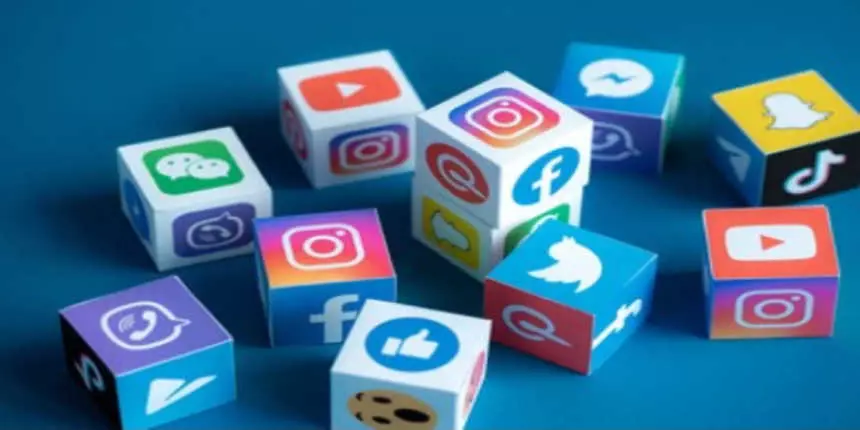
The media has an impact on the reputation of a political party, organisation, or individual. Media keeps people informed about current happenings in politics, culture, art, academia, communication, and commerce. Different forms of media help modern civilization in remaining in touch with the world in the shortest amount of time.
The media is all around us; we are immersed in it even when we are not aware of it. It is seen in newspapers, television, and technological gadgets such as cell phones. We perceive it as a tool for speeding time or distancing ourselves from what is going on in other people's lives.
Social media is a tool that has become immensely popular among all ages due to its user-friendly interface. The youth are the most prevalent social media user demographics, which is both remarkable and concerning.
Imagery from the media abounds in today's culture. We know this since we may see posters advertising well-known brands and the latest products almost anywhere we go, such as while driving on the highway. When we are drawn to advertisements, we may begin to imagine or visualise ourselves using them.
The media can tell us about a product, service, or message. Today, media influence is so powerful that it may easily influence public opinion both positively and negatively. We also live in a society that is heavily reliant on the media for entertainment and information. Indeed, pictures in the media have an effect on both people and society, especially women, men, teenagers, and young children.
Simultaneously, media such as television, broadens our perspective by providing us with access to facts from all around the world. Television may also provide us with a wide range of news and current happenings. It can also be a useful learning tool, guiding future generations in the proper direction.
The media has a large influence on our lives. We educate ourselves on a regular basis by staying up with the latest events. The news serves a crucial role in keeping us informed about current affairs and global happenings. For example, because of globalization, you can read about current happenings in the United States of America even if you live in India.
The media is the most significant communication tool. It aids in the delivery or dissemination of news. Although the media is also associated with spreading fake news, it also plays an important role in informing us about reality. We cannot deny that this world is filled with so many social problems that we require the media to spotlight these concerns so that the government or other individuals can take action to resolve these social issues.
Role Of Media
When it comes to the media, it is regarded as the fourth element of democracy. It's the most comprehensive repository of information on the globe. Everyone hope and expects the media to provide us with the most complete and accurate news in any situation. As a result, the media plays an important role in balancing all areas of our society.
It is crucial for teaching and informing global citizens about what is happening around the world. As a result, supplying readers with truthful and authentic news is vital for societal growth. The case of Aayushi Talvaar is a good illustration of how the media works.
Advantages Of Media
Education | The media educates the public. The mob learns about health issues, environmental preservation, and a variety of other relevant topics through television or radio programming.
Keeps Us Informed | People obtain the most recent news in a timely manner. Distance is not a barrier to providing knowledge to people from anywhere on the planet. People receive the daily latest news from media sites, which keep them current on the latest trends and happenings throughout the world.
Knowledge | The media can help you learn more about a variety of topics.
Amusement | It is a great source of entertainment. People are amused by music and television shows.
Disadvantages Of Media
Individualism | People spend far too much time watching or binge-watching stuff on the internet. As a result, their relationships with friends, family, and neighbours may suffer as a result.
Fraud and Cybercrime | The Internet is lurking with imposters, fraudsters, hackers, and other predators with the opportunity to commit criminal acts without the victims' knowledge.
Addiction | For most children and adults, some television shows and internet media can be quite addictive, resulting in a decrease in productivity.
Health Issues | Prolonged television viewing or internet bingeing can cause visual difficulties, and prolonged exposure to loud noises via headphones or earphones can cause hearing impairments.
Malware and Fake Profiles | Anyone can set up an anonymous account and pretend to be someone else. Anyone with access to such profiles might use them for malevolent purposes, such as spreading misinformation, which can harm the image of any targeted people or company.
Applications for Admissions are open.

Aakash iACST Scholarship Test 2024
Get up to 90% scholarship on NEET, JEE & Foundation courses

ALLEN Digital Scholarship Admission Test (ADSAT)
Register FREE for ALLEN Digital Scholarship Admission Test (ADSAT)

JEE Main Important Physics formulas
As per latest 2024 syllabus. Physics formulas, equations, & laws of class 11 & 12th chapters

PW JEE Coaching
Enrol in PW Vidyapeeth center for JEE coaching

PW NEET Coaching
Enrol in PW Vidyapeeth center for NEET coaching

JEE Main Important Chemistry formulas
As per latest 2024 syllabus. Chemistry formulas, equations, & laws of class 11 & 12th chapters
Download Careers360 App's
Regular exam updates, QnA, Predictors, College Applications & E-books now on your Mobile
Certifications
We Appeared in
Numbers, Facts and Trends Shaping Your World
Read our research on:
Full Topic List
Regions & Countries
- Publications
- Our Methods
- Short Reads
- Tools & Resources
Read Our Research On:
More Americans now see the media’s influence growing compared with a year ago
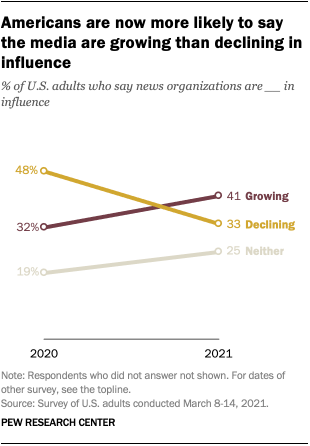
Americans’ views about the influence of the media in the country have shifted dramatically over the course of a year in which there was much discussion about the news media’s role during the election and post-election coverage , the COVID-19 pandemic and protests about racial justice . More Americans now say that news organizations are gaining influence than say their influence is waning, a stark contrast to just one year ago when the reverse was true.
When Americans were asked to evaluate the media’s standing in the nation, about four-in-ten (41%) say news organizations are growing in their influence, somewhat higher than the one-third (33%) who say their influence is declining, according to a Pew Research Center survey conducted March 8-14, 2021. The remaining one-quarter of U.S. adults say they are neither growing nor declining in influence.
To examine Americans’ views about the influence of the news media, Pew Research Center surveyed 12,045 U.S. adults from March 8 to 14, 2021. Everyone who completed the survey is a member of the Center’s American Trends Panel (ATP), an online survey panel that is recruited through national, random sampling of residential addresses. This way nearly all U.S. adults have a chance of selection. The survey is weighted to be representative of the U.S. adult population by gender, race, ethnicity, partisan affiliation, education and other categories. Read more about the ATP’s methodology . See here to read more about the questions used for this analysis and the methodology .
This is the latest report in Pew Research Center’s ongoing investigation of the state of news, information and journalism in the digital age, a research program funded by The Pew Charitable Trusts, with generous support from the John S. and James L. Knight Foundation.
By comparison, Americans in early 2020 were far more likely to say the news media were declining in influence . Nearly half (48%) at that time said this, compared with far fewer (32%) who said news organizations were growing in influence.
The 2021 figures more closely resemble responses from 2011 – the next most recent time this was asked – and before, in that more Americans then said the news media were growing in influence than declining. Views could have shifted in the gap between 2011 and 2020, but if so, they have now shifted back. (It should be noted that prior to 2020, this question was asked on the phone instead of on the web.)
What’s more, this shift in views of the media’s influence in the country occurred among members of both political parties – and in the same direction.
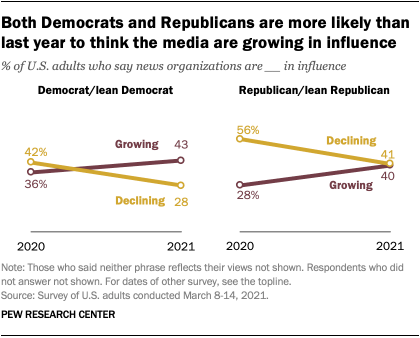
Republicans and Republican-leaning independents are about evenly split in whether they think news organizations are growing (40%) or declining in influence (41%). This is very different from a year ago, when Republicans were twice as likely to say their influence was declining than growing (56% vs. 28%).
And Democrats and Democratic leaners are now much more likely to say news organizations are growing (43%) than declining in influence (28%), while a year ago they were slightly more likely to say influence was declining (42% vs. 36% growing).
Overall, then, Republicans are still more likely than Democrats to say the news media are losing standing in the country, though the two groups are more on par in thinking that the media are increasing in their influence. (Democrats are somewhat more likely than Republicans to say news organizations are neither growing nor declining in influence – 29% vs. 19%.)
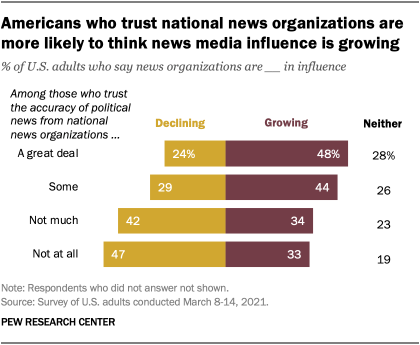
Trust in media closely ties to whether its influence is seen as growing or declining. Those who have greater trust in national news organizations tend to be more likely to see the news media gaining influence, while those with low levels of trust are generally more likely to see it waning.
Americans who say they have a great deal of trust in the accuracy of political news from national news organizations are twice as likely to say the news media are growing than declining in influence (48% vs. 24%, respectively). Conversely, those who have no trust at all are much more likely to think that news organizations are declining (47% vs. 33% who say they are growing).
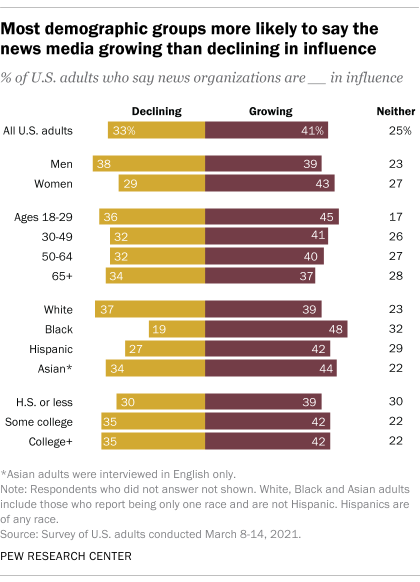
Black Americans are far more likely to think that the news media are growing in influence rather than declining (48% vs. 19%, respectively), as are Hispanic Americans though to a somewhat lesser degree. White Americans, on the other hand, are about evenly split in thinking the news media are growing or declining in influence (39% vs. 37%, respectively). And while men are about evenly split (39% growing vs. 38% declining), women are more likely to say news organizations are growing (43%) than declining (29%) in influence.
Note: Here are the questions used for this analysis, along with responses, and its methodology .
- Media Attitudes
- Politics & Media

Jeffrey Gottfried is an associate director focusing on internet and technology research at Pew Research Center .

Naomi Forman-Katz is a research analyst focusing on news and information research at Pew Research Center .
Americans’ Changing Relationship With Local News
Introducing the pew-knight initiative, 8 facts about black americans and the news, u.s. adults under 30 now trust information from social media almost as much as from national news outlets, u.s. journalists differ from the public in their views of ‘bothsidesism’ in journalism, most popular.
1615 L St. NW, Suite 800 Washington, DC 20036 USA (+1) 202-419-4300 | Main (+1) 202-857-8562 | Fax (+1) 202-419-4372 | Media Inquiries
Research Topics
- Email Newsletters
ABOUT PEW RESEARCH CENTER Pew Research Center is a nonpartisan fact tank that informs the public about the issues, attitudes and trends shaping the world. It conducts public opinion polling, demographic research, media content analysis and other empirical social science research. Pew Research Center does not take policy positions. It is a subsidiary of The Pew Charitable Trusts .
© 2024 Pew Research Center

Want to create or adapt books like this? Learn more about how Pressbooks supports open publishing practices.
1.3 The Evolution of Media
Learning objectives.
- Identify four roles the media performs in our society.
- Recognize events that affected the adoption of mass media.
- Explain how different technological transitions have shaped media industries.
In 2010, Americans could turn on their television and find 24-hour news channels as well as music videos, nature documentaries, and reality shows about everything from hoarders to fashion models. That’s not to mention movies available on demand from cable providers or television and video available online for streaming or downloading. Half of U.S. households receive a daily newspaper, and the average person holds 1.9 magazine subscriptions (State of the Media, 2004) (Bilton, 2007). A University of California, San Diego study claimed that U.S. households consumed a total of approximately 3.6 zettabytes of information in 2008—the digital equivalent of a 7-foot high stack of books covering the entire United States—a 350 percent increase since 1980 (Ramsey, 2009). Americans are exposed to media in taxicabs and buses, in classrooms and doctors’ offices, on highways, and in airplanes. We can begin to orient ourselves in the information cloud through parsing what roles the media fills in society, examining its history in society, and looking at the way technological innovations have helped bring us to where we are today.
What Does Media Do for Us?
Media fulfills several basic roles in our society. One obvious role is entertainment. Media can act as a springboard for our imaginations, a source of fantasy, and an outlet for escapism. In the 19th century, Victorian readers disillusioned by the grimness of the Industrial Revolution found themselves drawn into fantastic worlds of fairies and other fictitious beings. In the first decade of the 21st century, American television viewers could peek in on a conflicted Texas high school football team in Friday Night Lights ; the violence-plagued drug trade in Baltimore in The Wire ; a 1960s-Manhattan ad agency in Mad Men ; or the last surviving band of humans in a distant, miserable future in Battlestar Galactica . Through bringing us stories of all kinds, media has the power to take us away from ourselves.
Media can also provide information and education. Information can come in many forms, and it may sometimes be difficult to separate from entertainment. Today, newspapers and news-oriented television and radio programs make available stories from across the globe, allowing readers or viewers in London to access voices and videos from Baghdad, Tokyo, or Buenos Aires. Books and magazines provide a more in-depth look at a wide range of subjects. The free online encyclopedia Wikipedia has articles on topics from presidential nicknames to child prodigies to tongue twisters in various languages. The Massachusetts Institute of Technology (MIT) has posted free lecture notes, exams, and audio and video recordings of classes on its OpenCourseWare website, allowing anyone with an Internet connection access to world-class professors.
Another useful aspect of media is its ability to act as a public forum for the discussion of important issues. In newspapers or other periodicals, letters to the editor allow readers to respond to journalists or to voice their opinions on the issues of the day. These letters were an important part of U.S. newspapers even when the nation was a British colony, and they have served as a means of public discourse ever since. The Internet is a fundamentally democratic medium that allows everyone who can get online the ability to express their opinions through, for example, blogging or podcasting—though whether anyone will hear is another question.
Similarly, media can be used to monitor government, business, and other institutions. Upton Sinclair’s 1906 novel The Jungle exposed the miserable conditions in the turn-of-the-century meatpacking industry; and in the early 1970s, Washington Post reporters Bob Woodward and Carl Bernstein uncovered evidence of the Watergate break-in and subsequent cover-up, which eventually led to the resignation of President Richard Nixon. But purveyors of mass media may be beholden to particular agendas because of political slant, advertising funds, or ideological bias, thus constraining their ability to act as a watchdog. The following are some of these agendas:
- Entertaining and providing an outlet for the imagination
- Educating and informing
- Serving as a public forum for the discussion of important issues
- Acting as a watchdog for government, business, and other institutions
It’s important to remember, though, that not all media are created equal. While some forms of mass communication are better suited to entertainment, others make more sense as a venue for spreading information. In terms of print media, books are durable and able to contain lots of information, but are relatively slow and expensive to produce; in contrast, newspapers are comparatively cheaper and quicker to create, making them a better medium for the quick turnover of daily news. Television provides vastly more visual information than radio and is more dynamic than a static printed page; it can also be used to broadcast live events to a nationwide audience, as in the annual State of the Union address given by the U.S. president. However, it is also a one-way medium—that is, it allows for very little direct person-to-person communication. In contrast, the Internet encourages public discussion of issues and allows nearly everyone who wants a voice to have one. However, the Internet is also largely unmoderated. Users may have to wade through thousands of inane comments or misinformed amateur opinions to find quality information.
The 1960s media theorist Marshall McLuhan took these ideas one step further, famously coining the phrase “ the medium is the message (McLuhan, 1964).” By this, McLuhan meant that every medium delivers information in a different way and that content is fundamentally shaped by the medium of transmission. For example, although television news has the advantage of offering video and live coverage, making a story come alive more vividly, it is also a faster-paced medium. That means more stories get covered in less depth. A story told on television will probably be flashier, less in-depth, and with less context than the same story covered in a monthly magazine; therefore, people who get the majority of their news from television may have a particular view of the world shaped not by the content of what they watch but its medium . Or, as computer scientist Alan Kay put it, “Each medium has a special way of representing ideas that emphasize particular ways of thinking and de-emphasize others (Kay, 1994).” Kay was writing in 1994, when the Internet was just transitioning from an academic research network to an open public system. A decade and a half later, with the Internet firmly ensconced in our daily lives, McLuhan’s intellectual descendants are the media analysts who claim that the Internet is making us better at associative thinking, or more democratic, or shallower. But McLuhan’s claims don’t leave much space for individual autonomy or resistance. In an essay about television’s effects on contemporary fiction, writer David Foster Wallace scoffed at the “reactionaries who regard TV as some malignancy visited on an innocent populace, sapping IQs and compromising SAT scores while we all sit there on ever fatter bottoms with little mesmerized spirals revolving in our eyes…. Treating television as evil is just as reductive and silly as treating it like a toaster with pictures (Wallace, 1997).” Nonetheless, media messages and technologies affect us in countless ways, some of which probably won’t be sorted out until long in the future.
A Brief History of Mass Media and Culture
Until Johannes Gutenberg’s 15th-century invention of the movable type printing press, books were painstakingly handwritten and no two copies were exactly the same. The printing press made the mass production of print media possible. Not only was it much cheaper to produce written material, but new transportation technologies also made it easier for texts to reach a wide audience. It’s hard to overstate the importance of Gutenberg’s invention, which helped usher in massive cultural movements like the European Renaissance and the Protestant Reformation. In 1810, another German printer, Friedrich Koenig, pushed media production even further when he essentially hooked the steam engine up to a printing press, enabling the industrialization of printed media. In 1800, a hand-operated printing press could produce about 480 pages per hour; Koenig’s machine more than doubled this rate. (By the 1930s, many printing presses could publish 3,000 pages an hour.)
This increased efficiency went hand in hand with the rise of the daily newspaper. The newspaper was the perfect medium for the increasingly urbanized Americans of the 19th century, who could no longer get their local news merely through gossip and word of mouth. These Americans were living in unfamiliar territory, and newspapers and other media helped them negotiate the rapidly changing world. The Industrial Revolution meant that some people had more leisure time and more money, and media helped them figure out how to spend both. Media theorist Benedict Anderson has argued that newspapers also helped forge a sense of national identity by treating readers across the country as part of one unified community (Anderson, 1991).
In the 1830s, the major daily newspapers faced a new threat from the rise of penny papers, which were low-priced broadsheets that served as a cheaper, more sensational daily news source. They favored news of murder and adventure over the dry political news of the day. While newspapers catered to a wealthier, more educated audience, the penny press attempted to reach a wide swath of readers through cheap prices and entertaining (often scandalous) stories. The penny press can be seen as the forerunner to today’s gossip-hungry tabloids.
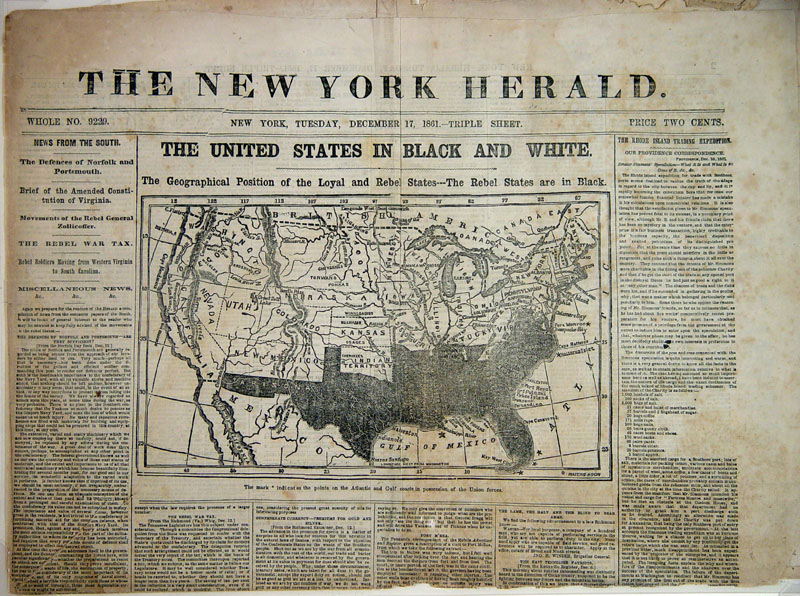
The penny press appealed to readers’ desires for lurid tales of murder and scandal.
Wikimedia Commons – public domain.
In the early decades of the 20th century, the first major nonprint form of mass media—radio—exploded in popularity. Radios, which were less expensive than telephones and widely available by the 1920s, had the unprecedented ability of allowing huge numbers of people to listen to the same event at the same time. In 1924, Calvin Coolidge’s preelection speech reached more than 20 million people. Radio was a boon for advertisers, who now had access to a large and captive audience. An early advertising consultant claimed that the early days of radio were “a glorious opportunity for the advertising man to spread his sales propaganda” because of “a countless audience, sympathetic, pleasure seeking, enthusiastic, curious, interested, approachable in the privacy of their homes (Briggs & Burke, 2005).” The reach of radio also meant that the medium was able to downplay regional differences and encourage a unified sense of the American lifestyle—a lifestyle that was increasingly driven and defined by consumer purchases. “Americans in the 1920s were the first to wear ready-made, exact-size clothing…to play electric phonographs, to use electric vacuum cleaners, to listen to commercial radio broadcasts, and to drink fresh orange juice year round (Mintz, 2007).” This boom in consumerism put its stamp on the 1920s and also helped contribute to the Great Depression of the 1930s (Library of Congress). The consumerist impulse drove production to unprecedented levels, but when the Depression began and consumer demand dropped dramatically, the surplus of production helped further deepen the economic crisis, as more goods were being produced than could be sold.
The post–World War II era in the United States was marked by prosperity, and by the introduction of a seductive new form of mass communication: television. In 1946, about 17,000 televisions existed in the United States; within 7 years, two-thirds of American households owned at least one set. As the United States’ gross national product (GNP) doubled in the 1950s, and again in the 1960s, the American home became firmly ensconced as a consumer unit; along with a television, the typical U.S. household owned a car and a house in the suburbs, all of which contributed to the nation’s thriving consumer-based economy (Briggs & Burke, 2005). Broadcast television was the dominant form of mass media, and the three major networks controlled more than 90 percent of the news programs, live events, and sitcoms viewed by Americans. Some social critics argued that television was fostering a homogenous, conformist culture by reinforcing ideas about what “normal” American life looked like. But television also contributed to the counterculture of the 1960s. The Vietnam War was the nation’s first televised military conflict, and nightly images of war footage and war protesters helped intensify the nation’s internal conflicts.
Broadcast technology, including radio and television, had such a hold on the American imagination that newspapers and other print media found themselves having to adapt to the new media landscape. Print media was more durable and easily archived, and it allowed users more flexibility in terms of time—once a person had purchased a magazine, he or she could read it whenever and wherever. Broadcast media, in contrast, usually aired programs on a fixed schedule, which allowed it to both provide a sense of immediacy and fleetingness. Until the advent of digital video recorders in the late 1990s, it was impossible to pause and rewind a live television broadcast.
The media world faced drastic changes once again in the 1980s and 1990s with the spread of cable television. During the early decades of television, viewers had a limited number of channels to choose from—one reason for the charges of homogeneity. In 1975, the three major networks accounted for 93 percent of all television viewing. By 2004, however, this share had dropped to 28.4 percent of total viewing, thanks to the spread of cable television. Cable providers allowed viewers a wide menu of choices, including channels specifically tailored to people who wanted to watch only golf, classic films, sermons, or videos of sharks. Still, until the mid-1990s, television was dominated by the three large networks. The Telecommunications Act of 1996, an attempt to foster competition by deregulating the industry, actually resulted in many mergers and buyouts that left most of the control of the broadcast spectrum in the hands of a few large corporations. In 2003, the Federal Communications Commission (FCC) loosened regulation even further, allowing a single company to own 45 percent of a single market (up from 25 percent in 1982).
Technological Transitions Shape Media Industries
New media technologies both spring from and cause social changes. For this reason, it can be difficult to neatly sort the evolution of media into clear causes and effects. Did radio fuel the consumerist boom of the 1920s, or did the radio become wildly popular because it appealed to a society that was already exploring consumerist tendencies? Probably a little bit of both. Technological innovations such as the steam engine, electricity, wireless communication, and the Internet have all had lasting and significant effects on American culture. As media historians Asa Briggs and Peter Burke note, every crucial invention came with “a change in historical perspectives.” Electricity altered the way people thought about time because work and play were no longer dependent on the daily rhythms of sunrise and sunset; wireless communication collapsed distance; the Internet revolutionized the way we store and retrieve information.
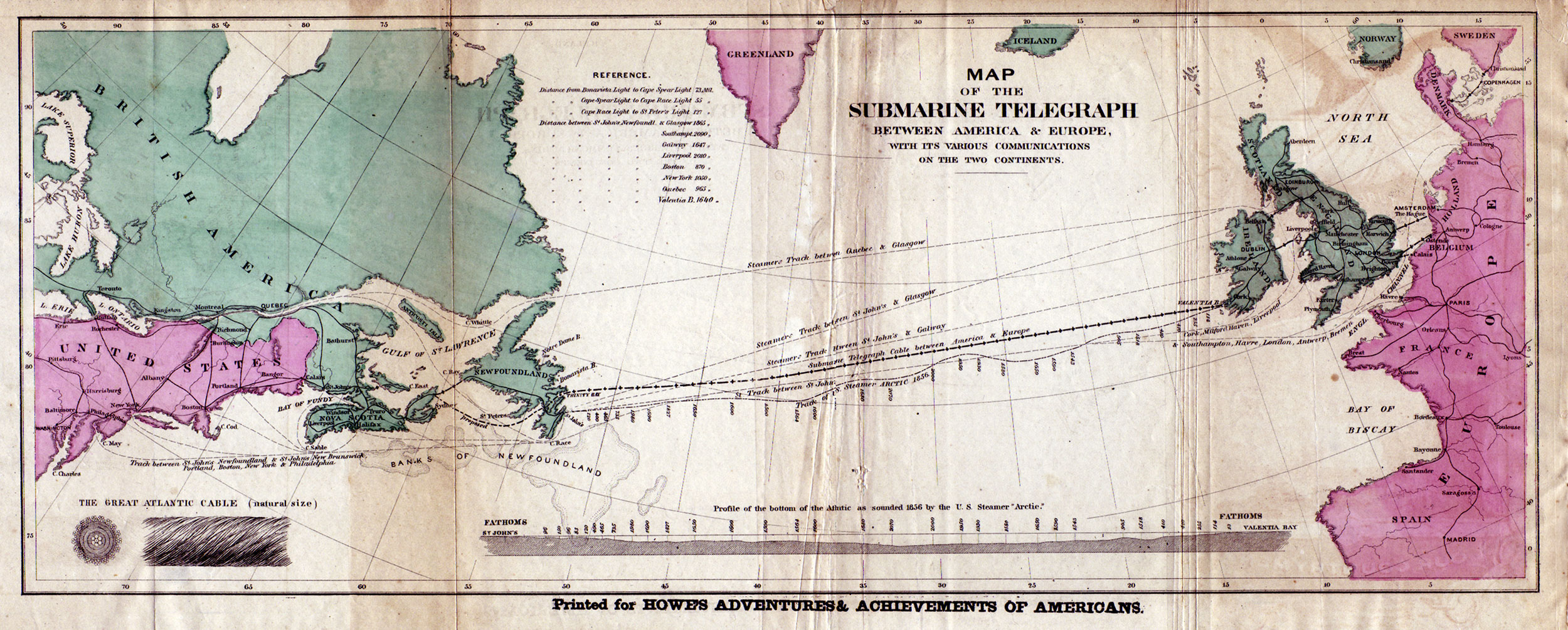
The transatlantic telegraph cable made nearly instantaneous communication between the United States and Europe possible for the first time in 1858.
Amber Case – 1858 trans-Atlantic telegraph cable route – CC BY-NC 2.0.
The contemporary media age can trace its origins back to the electrical telegraph, patented in the United States by Samuel Morse in 1837. Thanks to the telegraph, communication was no longer linked to the physical transportation of messages; it didn’t matter whether a message needed to travel 5 or 500 miles. Suddenly, information from distant places was nearly as accessible as local news, as telegraph lines began to stretch across the globe, making their own kind of World Wide Web. In this way, the telegraph acted as the precursor to much of the technology that followed, including the telephone, radio, television, and Internet. When the first transatlantic cable was laid in 1858, allowing nearly instantaneous communication from the United States to Europe, the London Times described it as “the greatest discovery since that of Columbus, a vast enlargement…given to the sphere of human activity.”
Not long afterward, wireless communication (which eventually led to the development of radio, television, and other broadcast media) emerged as an extension of telegraph technology. Although many 19th-century inventors, including Nikola Tesla, were involved in early wireless experiments, it was Italian-born Guglielmo Marconi who is recognized as the developer of the first practical wireless radio system. Many people were fascinated by this new invention. Early radio was used for military communication, but soon the technology entered the home. The burgeoning interest in radio inspired hundreds of applications for broadcasting licenses from newspapers and other news outlets, retail stores, schools, and even cities. In the 1920s, large media networks—including the National Broadcasting Company (NBC) and the Columbia Broadcasting System (CBS)—were launched, and they soon began to dominate the airwaves. In 1926, they owned 6.4 percent of U.S. broadcasting stations; by 1931, that number had risen to 30 percent.
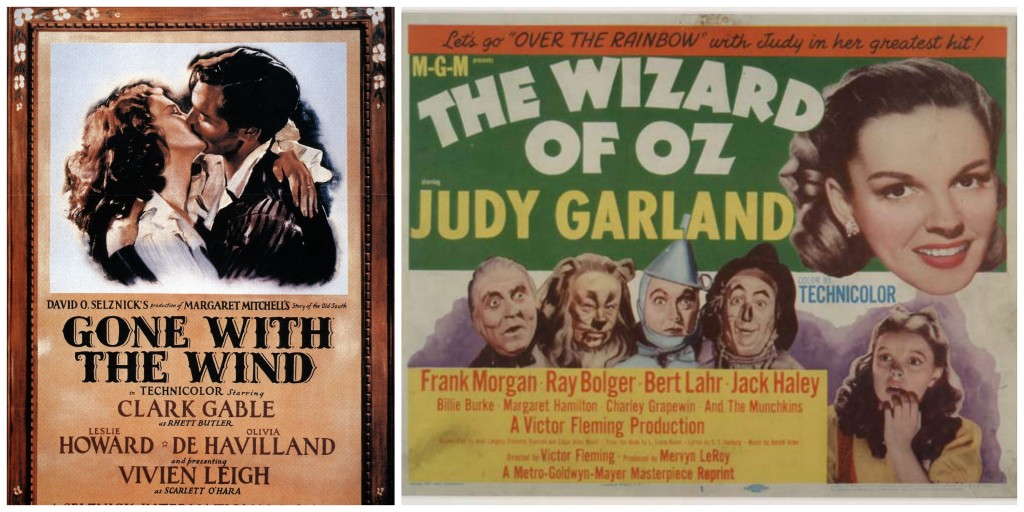
Gone With the Wind defeated The Wizard of Oz to become the first color film ever to win the Academy Award for Best Picture in 1939.
Wikimedia Commons – public domain; Wikimedia Commons – public domain.
In addition to the breakthroughs in audio broadcasting, inventors in the 1800s made significant advances in visual media. The 19th-century development of photographic technologies would lead to the later innovations of cinema and television. As with wireless technology, several inventors independently created a form of photography at the same time, among them the French inventors Joseph Niépce and Louis Daguerre and the British scientist William Henry Fox Talbot. In the United States, George Eastman developed the Kodak camera in 1888, anticipating that Americans would welcome an inexpensive, easy-to-use camera into their homes as they had with the radio and telephone. Moving pictures were first seen around the turn of the century, with the first U.S. projection-hall opening in Pittsburgh in 1905. By the 1920s, Hollywood had already created its first stars, most notably Charlie Chaplin; by the end of the 1930s, Americans were watching color films with full sound, including Gone With the Wind and The Wizard of Oz .
Television—which consists of an image being converted to electrical impulses, transmitted through wires or radio waves, and then reconverted into images—existed before World War II, but gained mainstream popularity in the 1950s. In 1947, there were 178,000 television sets made in the United States; 5 years later, 15 million were made. Radio, cinema, and live theater declined because the new medium allowed viewers to be entertained with sound and moving pictures in their homes. In the United States, competing commercial stations (including the radio powerhouses of CBS and NBC) meant that commercial-driven programming dominated. In Great Britain, the government managed broadcasting through the British Broadcasting Corporation (BBC). Funding was driven by licensing fees instead of advertisements. In contrast to the U.S. system, the BBC strictly regulated the length and character of commercials that could be aired. However, U.S. television (and its increasingly powerful networks) still dominated. By the beginning of 1955, there were around 36 million television sets in the United States, but only 4.8 million in all of Europe. Important national events, broadcast live for the first time, were an impetus for consumers to buy sets so they could witness the spectacle; both England and Japan saw a boom in sales before important royal weddings in the 1950s.

In the 1960s, the concept of a useful portable computer was still a dream; huge mainframes were required to run a basic operating system.
In 1969, management consultant Peter Drucker predicted that the next major technological innovation would be an electronic appliance that would revolutionize the way people lived just as thoroughly as Thomas Edison’s light bulb had. This appliance would sell for less than a television set and be “capable of being plugged in wherever there is electricity and giving immediate access to all the information needed for school work from first grade through college.” Although Drucker may have underestimated the cost of this hypothetical machine, he was prescient about the effect these machines—personal computers—and the Internet would have on education, social relationships, and the culture at large. The inventions of random access memory (RAM) chips and microprocessors in the 1970s were important steps to the Internet age. As Briggs and Burke note, these advances meant that “hundreds of thousands of components could be carried on a microprocessor.” The reduction of many different kinds of content to digitally stored information meant that “print, film, recording, radio and television and all forms of telecommunications [were] now being thought of increasingly as part of one complex.” This process, also known as convergence, is a force that’s affecting media today.
Key Takeaways
Media fulfills several roles in society, including the following:
- entertaining and providing an outlet for the imagination,
- educating and informing,
- serving as a public forum for the discussion of important issues, and
- acting as a watchdog for government, business, and other institutions.
- Johannes Gutenberg’s invention of the printing press enabled the mass production of media, which was then industrialized by Friedrich Koenig in the early 1800s. These innovations led to the daily newspaper, which united the urbanized, industrialized populations of the 19th century.
- In the 20th century, radio allowed advertisers to reach a mass audience and helped spur the consumerism of the 1920s—and the Great Depression of the 1930s. After World War II, television boomed in the United States and abroad, though its concentration in the hands of three major networks led to accusations of homogenization. The spread of cable and subsequent deregulation in the 1980s and 1990s led to more channels, but not necessarily to more diverse ownership.
- Transitions from one technology to another have greatly affected the media industry, although it is difficult to say whether technology caused a cultural shift or resulted from it. The ability to make technology small and affordable enough to fit into the home is an important aspect of the popularization of new technologies.
Choose two different types of mass communication—radio shows, television broadcasts, Internet sites, newspaper advertisements, and so on—from two different kinds of media. Make a list of what role(s) each one fills, keeping in mind that much of what we see, hear, or read in the mass media has more than one aspect. Then, answer the following questions. Each response should be a minimum of one paragraph.
- To which of the four roles media plays in society do your selections correspond? Why did the creators of these particular messages present them in these particular ways and in these particular mediums?
- What events have shaped the adoption of the two kinds of media you selected?
- How have technological transitions shaped the industries involved in the two kinds of media you have selected?
Anderson, Benedict Imagined Communities: Reflections on the Origin and Spread of Nationalism , (London: Verso, 1991).
Bilton, Jim. “The Loyalty Challenge: How Magazine Subscriptions Work,” In Circulation , January/February 2007.
Briggs and Burke, Social History of the Media .
Briggs, Asa and Peter Burke, A Social History of the Media: From Gutenberg to the Internet (Malden, MA: Polity Press, 2005).
Kay, Alan. “The Infobahn Is Not the Answer,” Wired , May 1994.
Library of Congress, “Radio: A Consumer Product and a Producer of Consumption,” Coolidge-Consumerism Collection, http://lcweb2.loc.gov:8081/ammem/amrlhtml/inradio.html .
McLuhan, Marshall. Understanding Media: The Extensions of Man , (New York: McGraw-Hill, 1964).
Mintz, Steven “The Jazz Age: The American 1920s: The Formation of Modern American Mass Culture,” Digital History , 2007, http://www.digitalhistory.uh.edu/database/article_display.cfm?hhid=454 .
Ramsey, Doug. “UC San Diego Experts Calculate How Much Information Americans Consume” UC San Diego News Center, December 9, 2009, http://ucsdnews.ucsd.edu/newsrel/general/12-09Information.asp .
State of the Media, project for Excellence in Journalism, The State of the News Media 2004 , http://www.stateofthemedia.org/2004/ .
Wallace, David Foster “E Unibus Pluram: Television and U.S. Fiction,” in A Supposedly Fun Thing I’ll Never Do Again (New York: Little Brown, 1997).
Understanding Media and Culture Copyright © 2016 by University of Minnesota is licensed under a Creative Commons Attribution-NonCommercial-ShareAlike 4.0 International License , except where otherwise noted.
Suggestions or feedback?
MIT News | Massachusetts Institute of Technology
- Machine learning
- Social justice
- Black holes
- Classes and programs
Departments
- Aeronautics and Astronautics
- Brain and Cognitive Sciences
- Architecture
- Political Science
- Mechanical Engineering
Centers, Labs, & Programs
- Abdul Latif Jameel Poverty Action Lab (J-PAL)
- Picower Institute for Learning and Memory
- Lincoln Laboratory
- School of Architecture + Planning
- School of Engineering
- School of Humanities, Arts, and Social Sciences
- Sloan School of Management
- School of Science
- MIT Schwarzman College of Computing
Why social media has changed the world — and how to fix it
Press contact :, media download.
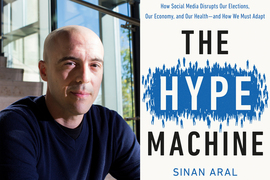

*Terms of Use:
Images for download on the MIT News office website are made available to non-commercial entities, press and the general public under a Creative Commons Attribution Non-Commercial No Derivatives license . You may not alter the images provided, other than to crop them to size. A credit line must be used when reproducing images; if one is not provided below, credit the images to "MIT."

Previous image Next image
Are you on social media a lot? When is the last time you checked Twitter, Facebook, or Instagram? Last night? Before breakfast? Five minutes ago?
If so, you are not alone — which is the point, of course. Humans are highly social creatures. Our brains have become wired to process social information, and we usually feel better when we are connected. Social media taps into this tendency.
“Human brains have essentially evolved because of sociality more than any other thing,” says Sinan Aral, an MIT professor and expert in information technology and marketing. “When you develop a population-scale technology that delivers social signals to the tune of trillions per day in real-time, the rise of social media isn’t unexpected. It’s like tossing a lit match into a pool of gasoline.”
The numbers make this clear. In 2005, about 7 percent of American adults used social media. But by 2017, 80 percent of American adults used Facebook alone. About 3.5 billion people on the planet, out of 7.7 billion, are active social media participants. Globally, during a typical day, people post 500 million tweets, share over 10 billion pieces of Facebook content, and watch over a billion hours of YouTube video.
As social media platforms have grown, though, the once-prevalent, gauzy utopian vision of online community has disappeared. Along with the benefits of easy connectivity and increased information, social media has also become a vehicle for disinformation and political attacks from beyond sovereign borders.
“Social media disrupts our elections, our economy, and our health,” says Aral, who is the David Austin Professor of Management at the MIT Sloan School of Management.
Now Aral has written a book about it. In “The Hype Machine,” published this month by Currency, a Random House imprint, Aral details why social media platforms have become so successful yet so problematic, and suggests ways to improve them.
As Aral notes, the book covers some of the same territory as “The Social Dilemma,” a documentary that is one of the most popular films on Netflix at the moment. But Aral’s book, as he puts it, "starts where ‘The Social Dilemma’ leaves off and goes one step further to ask: What can we do about it?”
“This machine exists in every facet of our lives,” Aral says. “And the question in the book is, what do we do? How do we achieve the promise of this machine and avoid the peril? We’re at a crossroads. What we do next is essential, so I want to equip people, policymakers, and platforms to help us achieve the good outcomes and avoid the bad outcomes.”
When “engagement” equals anger
“The Hype Machine” draws on Aral’s own research about social networks, as well as other findings, from the cognitive sciences, computer science, business, politics, and more. Researchers at the University of California at Los Angeles, for instance, have found that people obtain bigger hits of dopamine — the chemical in our brains highly bound up with motivation and reward — when their social media posts receive more likes.
At the same time, consider a 2018 MIT study by Soroush Vosoughi, an MIT PhD student and now an assistant professor of computer science at Dartmouth College; Deb Roy, MIT professor of media arts and sciences and executive director of the MIT Media Lab; and Aral, who has been studying social networking for 20 years. The three researchers found that on Twitter, from 2006 to 2017, false news stories were 70 percent more likely to be retweeted than true ones. Why? Most likely because false news has greater novelty value compared to the truth, and provokes stronger reactions — especially disgust and surprise.
In this light, the essential tension surrounding social media companies is that their platforms gain audiences and revenue when posts provoke strong emotional responses, often based on dubious content.
“This is a well-designed, well-thought-out machine that has objectives it maximizes,” Aral says. “The business models that run the social-media industrial complex have a lot to do with the outcomes we’re seeing — it’s an attention economy, and businesses want you engaged. How do they get engagement? Well, they give you little dopamine hits, and … get you riled up. That’s why I call it the hype machine. We know strong emotions get us engaged, so [that favors] anger and salacious content.”
From Russia to marketing
“The Hype Machine” explores both the political implications and business dimensions of social media in depth. Certainly social media is fertile terrain for misinformation campaigns. During the 2016 U.S. presidential election, Russia spread false information to at least 126 million people on Facebook and another 20 million people on Instagram (which Facebook owns), and was responsible for 10 million tweets. About 44 percent of adult Americans visited a false news source in the final weeks of the campaign.
“I think we need to be a lot more vigilant than we are,” says Aral.
We do not know if Russia’s efforts altered the outcome of the 2016 election, Aral says, though they may have been fairly effective. Curiously, it is not clear if the same is true of most U.S. corporate engagement efforts.
As Aral examines, digital advertising on most big U.S. online platforms is often wildly ineffective, with academic studies showing that the “lift” generated by ad campaigns — the extent to which they affect consumer action — has been overstated by a factor of hundreds, in some cases. Simply counting clicks on ads is not enough. Instead, online engagement tends to be more effective among new consumers, and when it is targeted well; in that sense, there is a parallel between good marketing and guerilla social media campaigns.
“The two questions I get asked the most these days,” Aral says, “are, one, did Russia succeed in intervening in our democracy? And two, how do I measure the ROI [return on investment] from marketing investments? As I was writing this book, I realized the answer to those two questions is the same.”
Ideas for improvement
“The Hype Machine” has received praise from many commentators. Foster Provost, a professor at New York University’s Stern School of Business, says it is a “masterful integration of science, business, law, and policy.” Duncan Watts, a university professor at the University of Pennsylvania, says the book is “essential reading for anyone who wants to understand how we got here and how we can get somewhere better.”
In that vein, “The Hype Machine” has several detailed suggestions for improving social media. Aral favors automated and user-generated labeling of false news, and limiting revenue-collection that is based on false content. He also calls for firms to help scholars better research the issue of election interference.
Aral believes federal privacy measures could be useful, if we learn from the benefits and missteps of the General Data Protection Regulation (GDPR) in Europe and a new California law that lets consumers stop some data-sharing and allows people to find out what information companies have stored about them. He does not endorse breaking up Facebook, and suggests instead that the social media economy needs structural reform. He calls for data portability and interoperability, so “consumers would own their identities and could freely switch from one network to another.” Aral believes that without such fundamental changes, new platforms will simply replace the old ones, propelled by the network effects that drive the social-media economy.
“I do not advocate any one silver bullet,” says Aral, who emphasizes that changes in four areas together — money, code, norms, and laws — can alter the trajectory of the social media industry.
But if things continue without change, Aral adds, Facebook and the other social media giants risk substantial civic backlash and user burnout.
“If you get me angry and riled up, I might click more in the short term, but I might also grow really tired and annoyed by how this is making my life miserable, and I might turn you off entirely,” Aral observes. “I mean, that’s why we have a Delete Facebook movement, that’s why we have a Stop Hate for Profit movement. People are pushing back against the short-term vision, and I think we need to embrace this longer-term vision of a healthier communications ecosystem.”
Changing the social media giants can seem like a tall order. Still, Aral says, these firms are not necessarily destined for domination.
“I don’t think this technology or any other technology has some deterministic endpoint,” Aral says. “I want to bring us back to a more practical reality, which is that technology is what we make it, and we are abdicating our responsibility to steer technology toward good and away from bad. That is the path I try to illuminate in this book.”
Share this news article on:
Press mentions.
Prof. Sinan Aral’s new book, “The Hype Machine,” has been selected as one of the best books of the year about AI by Wired . Gilad Edelman notes that Aral’s book is “an engagingly written shortcut to expertise on what the likes of Facebook and Twitter are doing to our brains and our society.”
Prof. Sinan Aral speaks with Danny Crichton of TechCrunch about his new book, “The Hype Machine,” which explores the future of social media. Aral notes that he believes a starting point “for solving the social media crisis is creating competition in the social media economy.”
New York Times
Prof. Sinan Aral speaks with New York Times editorial board member Greg Bensinger about how social media platforms can reduce the spread of misinformation. “Human-in-the-loop moderation is the right solution,” says Aral. “It’s not a simple silver bullet, but it would give accountability where these companies have in the past blamed software.”
Prof. Sinan Aral speaks with Kara Miller of GBH’s Innovation Hub about his research examining the impact of social media on everything from business re-openings during the Covid-19 pandemic to politics.
Prof. Sinan Aral speaks with NPR’s Michael Martin about his new book, “The Hype Machine,” which explores the benefits and downfalls posed by social media. “I've been researching social media for 20 years. I've seen its evolution and also the techno utopianism and dystopianism,” says Aral. “I thought it was appropriate to have a book that asks, 'what can we do to really fix the social media morass we find ourselves in?'”
Previous item Next item
Related Links
- MIT Sloan School of Management
Related Topics
- Business and management
- Social media
- Books and authors
- Behavioral economics
Related Articles
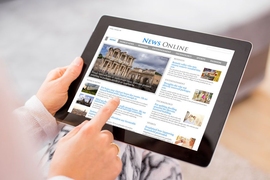
The catch to putting warning labels on fake news

Our itch to share helps spread Covid-19 misinformation

Better fact-checking for fake news

Study: On Twitter, false news travels faster than true stories

Social networking
More mit news.
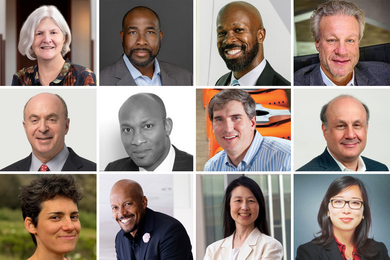
MIT Corporation elects 10 term members, two life members
Read full story →
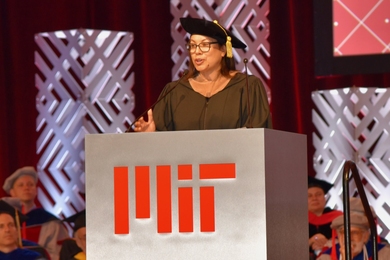
Diane Hoskins ’79: How going off-track can lead new SA+P graduates to become integrators of ideas

Chancellor Melissa Nobles’ address to MIT’s undergraduate Class of 2024
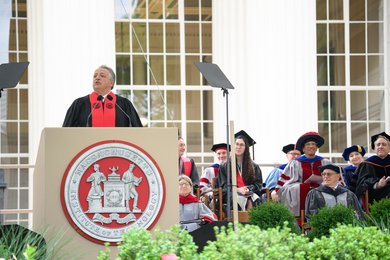
Noubar Afeyan PhD ’87 gives new MIT graduates a special assignment

Commencement address by Noubar Afeyan PhD ’87
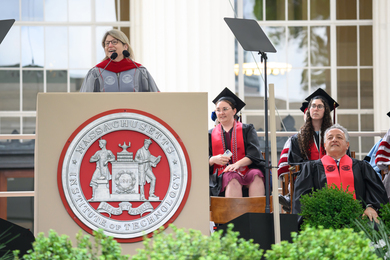
President Sally Kornbluth’s charge to the Class of 2024
- More news on MIT News homepage →
Massachusetts Institute of Technology 77 Massachusetts Avenue, Cambridge, MA, USA
- Map (opens in new window)
- Events (opens in new window)
- People (opens in new window)
- Careers (opens in new window)
- Accessibility
- Social Media Hub
- MIT on Facebook
- MIT on YouTube
- MIT on Instagram
A business journal from the Wharton School of the University of Pennsylvania
The Impact of Social Media: Is it Irreplaceable?
July 26, 2019 • 15 min read.
Social media as we know it has barely reached its 20th birthday, but it’s changed the fabric of everyday life. What does the future hold for the sector and the players currently at the top?

- Public Policy
In little more than a decade, the impact of social media has gone from being an entertaining extra to a fully integrated part of nearly every aspect of daily life for many.
Recently in the realm of commerce, Facebook faced skepticism in its testimony to the Senate Banking Committee on Libra, its proposed cryptocurrency and alternative financial system . In politics, heartthrob Justin Bieber tweeted the President of the United States, imploring him to “let those kids out of cages.” In law enforcement, the Philadelphia police department moved to terminate more than a dozen police officers after their racist comments on social media were revealed.
And in the ultimate meshing of the digital and physical worlds, Elon Musk raised the specter of essentially removing the space between social and media through the invention — at some future time — of a brain implant that connects human tissue to computer chips.
All this, in the span of about a week.
As quickly as social media has insinuated itself into politics, the workplace, home life, and elsewhere, it continues to evolve at lightning speed, making it tricky to predict which way it will morph next. It’s hard to recall now, but SixDegrees.com, Friendster, and Makeoutclub.com were each once the next big thing, while one survivor has continued to grow in astonishing ways. In 2006, Facebook had 7.3 million registered users and reportedly turned down a $750 million buyout offer. In the first quarter of 2019, the company could claim 2.38 billion active users, with a market capitalization hovering around half a trillion dollars.
“In 2007 I argued that Facebook might not be around in 15 years. I’m clearly wrong, but it is interesting to see how things have changed,” says Jonah Berger, Wharton marketing professor and author of Contagious: Why Things Catch On . The challenge going forward is not just having the best features, but staying relevant, he says. “Social media isn’t a utility. It’s not like power or water where all people care about is whether it works. Young people care about what using one platform or another says about them. It’s not cool to use the same site as your parents and grandparents, so they’re always looking for the hot new thing.”
Just a dozen years ago, everyone was talking about a different set of social networking services, “and I don’t think anyone quite expected Facebook to become so huge and so dominant,” says Kevin Werbach, Wharton professor of legal studies and business ethics. “At that point, this was an interesting discussion about tech start-ups.
“Today, Facebook is one of the most valuable companies on earth and front and center in a whole range of public policy debates, so the scope of issues we’re thinking about with social media are broader than then,” Werbach adds.
Cambridge Analytica , the impact of social media on the last presidential election and other issues may have eroded public trust, Werbach said, but “social media has become really fundamental to the way that billions of people get information about the world and connect with each other, which raises the stakes enormously.”
Just Say No
“Facebook is dangerous,” said Sen. Sherrod Brown (D-Ohio) at July’s hearing of the Senate Banking Committee. “Facebook has said, ‘just trust us.’ And every time Americans trust you, they seem to get burned.”
Social media has plenty of detractors, but by and large, do Americans agree with Brown’s sentiment? In 2018, 42% of those surveyed in a Pew Research Center survey said they had taken a break from checking the platform for a period of several weeks or more, while 26% said they had deleted the Facebook app from their cellphone.
A year later, though, despite the reputational beating social media had taken, the 2019 iteration of the same Pew survey found social media use unchanged from 2018.
Facebook has its critics, says Wharton marketing professor Pinar Yildirim, and they are mainly concerned about two things: mishandling consumer data and poorly managing access to it by third-party providers; and the level of disinformation spreading on Facebook.
“Social media isn’t a utility. It’s not like power or water where all people care about is whether it works. Young people care about what using one platform or another says about them.” –Jonah Berger
“The question is, are we at a point where the social media organizations and their activities should be regulated for the benefit of the consumer? I do not think more regulation will necessarily help, but certainly this is what is on the table,” says Yildirim. “In the period leading to the [2020 U.S. presidential] elections, we will hear a range of discussions about regulation on the tech industry.”
Some proposals relate to stricter regulation on collection and use of consumer data, Yildirim adds, noting that the European Union already moved to stricter regulations last year by adopting the General Data Protection Regulation (GDPR) . “A number of companies in the U.S. and around the world adopted the GDPR protocol for all of their customers, not just for the residents of EU,” she says. “We will likely hear more discussions on regulation of such data, and we will likely see stricter regulation of this data.”
The other discussion bound to intensify is around the separation of Big Tech into smaller, easier to regulate units. “Most of us academics do not think that dividing organizations into smaller units is sufficient to improve their compliance with regulation. It also does not necessarily mean they will be less competitive,” says Yildirim. “For instance, in the discussion of Facebook, it is not even clear yet how breaking up the company would work, given that it does not have very clear boundaries between different business units.”
Even if such regulations never come to pass, the discussions “may nevertheless hurt Big Tech financially, given that most companies are publicly traded and it adds to the uncertainty,” Yildirim notes.
One prominent commentator about the negative impact of social media is Jaron Lanier, whose fervent opposition makes itself apparent in the plainspoken title of his 2018 book Ten Arguments for Deleting Your Social Media Accounts Right Now . He cites loss of free will, social media’s erosion of the truth and destruction of empathy, its tendency to make people unhappy, and the way in which it is “making politics impossible.” The title of the last chapter: “Social Media Hates Your Soul.”
Lanier is no tech troglodyte. A polymath who bridges the digital and analog realms, he is a musician and writer, has worked as a scientist for Microsoft, and was co-founder of pioneering virtual reality company VPL Research. The nastiness that online existence brings out in users “turned out to be like crude oil for the social media companies and other behavior manipulation empires that quickly came to dominate the internet, because it fuelled negative behavioral feedback,” he writes.
“Social media has become really fundamental to the way that billions of people get information about the world and connect with each other, which raises the stakes enormously.” –Kevin Werbach
Worse, there is an addictive quality to social media, and that is a big issue, says Berger. “Social media is like a drug, but what makes it particularly addictive is that it is adaptive. It adjusts based on your preferences and behaviors,” he says, “which makes it both more useful and engaging and interesting, and more addictive.”
The effect of that drug on mental health is only beginning to be examined, but a recent University of Pennsylvania study makes the case that limiting use of social media can be a good thing. Researchers looked at a group of 143 Penn undergraduates, using baseline monitoring and randomly assigning each to either a group limiting Facebook, Instagram, and Snapchat use to 10 minutes per platform per day, or to one told to use social media as usual for three weeks. The results, published in the Journal of Social and Clinical Psychology , showed significant reductions in loneliness and depression over three weeks in the group limiting use compared to the control group.
However, “both groups showed significant decreases in anxiety and fear of missing out over baseline, suggesting a benefit of increased self-monitoring,” wrote the authors of “ No More FOMO: Limiting Social Media Decreases Loneliness and Depression .”
Monetizing a League (and a Reality) All Their Own
No one, though, is predicting that social media is a fad that will pass like its analog antecedent of the 1970s, citizens band radio. It will, however, evolve. The idea of social media as just a way to reconnect with high school friends seems quaint now. The impact of social media today is a big tent, including not only networks like Facebook, but also forums like Reddit and video-sharing platforms.
“The question is, are we at a point where the social media organizations and their activities should be regulated for the benefit of the consumer?” –Pinar Yildirim
Virtual worlds and gaming have become a major part of the sector, too. Wharton marketing professor Peter Fader says gamers are creating their own user-generated content through virtual worlds — and the revenue to go with it. He points to one group of gamers that use Grand Theft Auto as a kind of stage or departure point “to have their own virtual show.” In NoPixel, the Grand Theft Auto roleplaying server, “not much really happens and millions are tuning in to watch them. Just watching, not even participating, and it’s either live-streamed or recorded. And people are making donations to support this thing. The gamers are making hundreds of thousands of dollars.
“Now imagine having a 30-person reality show all filmed live and you can take the perspective of one person and then watch it again from another person’s perspective,” he continues. “Along the way, they can have a tip jar or talk about things they endorse. That kind of immersive media starts to build the bridge to what we like to get out of TV, but even better. Those things are on the periphery right now, but I think they are going to take over.”
Big players have noticed the potential of virtual sports and are getting into the act. In a striking example of the physical world imitating the digital one, media companies are putting up real-life stadiums where teams compete in video games. Comcast Spectator in March announced that it is building a new $50 million stadium in South Philadelphia that will be the home of the Philadelphia Fusion, the city’s e-sports team in the Overwatch League.
E-sports is serious business, with revenues globally — including advertising, sponsorships, and media rights — expected to reach $1.1 billion in 2019, according to gaming industry analytics company Newzoo.
“E-sports is absolutely here to stay,” says Fader, “and I think it’s a safe bet to say that e-sports will dominate most traditional sports, managing far more revenue and having more impact on our consciousness than baseball.”
It’s no surprise, then, that Facebook has begun making deals to carry e-sports content. In fact, it is diversification like this that may keep Facebook from ending up like its failed upstart peers. One thing that Facebook has managed to do that MySpace, Friendster, and others didn’t, is “a very good job of creating functional integration with the value they are delivering, as opposed to being a place to just share photos or send messages, it serves a lot of diversified functions,” says Keith E. Niedermeier, director of Wharton’s undergraduate marketing program and an adjunct professor of marketing. “They are creating groups and group connections, but you see them moving into lots of other services like streaming entertainment, mobile payments, and customer-to-customer buying and selling.”
“[WeChat] has really instantiated itself as a day-to-day tool in China, and it’s clear to me that Facebook would like to emulate that sort of thing.” –Keith Niedermeier
In China, WeChat has become the biggest mobile payment platform in the world and it is the platform for many third-party apps for things like bike sharing and ordering airplane tickets. “It has really instantiated itself as a day-to-day tool in China, and it’s clear to me that Facebook would like to emulate that sort of thing,” says Niedermeier.
Among nascent social media platforms that are particularly promising right now, Yildirim says that “social media platforms which are directed at achieving some objectives with smaller scale and more homogenous people stand a higher chance of entering the market and being able to compete with large, general-purpose platforms such as Facebook and Twitter.”
Irreplaceable – and Damaging?
Of course, many have begun to believe that the biggest challenge around the impact of social media may be the way it is changing society. The “attention-grabbing algorithms underlying social media … propel authoritarian practices that aim to sow confusion, ignorance, prejudice, and chaos, thereby facilitating manipulation and undermining accountability,” writes University of Toronto political science professor Ronald Deibert in a January essay in the Journal of Democracy .
Berger notes that any piece of information can now get attention, whether it is true or false. This means more potential for movements both welcome as well as malevolent. “Before, only media companies had reach, so it was harder for false information to spread. It could happen, but it was slow. Now anyone can share anything, and because people tend to believe what they see, false information can spread just as, if not more easily, than the truth.
“It’s certainly allowed more things to bubble up rather than flow from the top down,” says Berger. Absent gatekeepers, “everyone is their own media company, broadcasting to the particular set of people that follow them. It used to be that a major label signing you was the path to stardom. Now artists can build their own following online and break through that way. Social media has certainly made fame and attention more democratic, though not always in a good way.”
Deibert writes that “in a short period of time, digital technologies have become pervasive and deeply embedded in all that we do. Unwinding them completely is neither possible nor desirable.”
His cri de coeur argues: that citizens have the right to know what companies and governments are doing with their personal data, and that this right be extended internationally to hold autocratic regimes to account; that companies be barred from selling products and services that enable infringements on human rights and harms to civil society; for the creation of independent agencies with real power to hold social-media platforms to account; and the creation and enforcement of strong antitrust laws to end dominance of a very few social-media companies.
“Social media has certainly made fame and attention more democratic, though not always in a good way.” –Jonah Berger
The rising tide of concern is now extending across sectors. The U.S. Justice Department has recently begun an anti-trust investigation into how tech companies operate in social media, search, and retail services. In July, the John S. and James L. Knight Foundation announced the award of nearly $50 million in new funding to 11 U.S. universities to research how technology is transforming democracy. The foundation is also soliciting additional grant proposals to fund policy and legal research into the “rules, norms, and governance” that should be applied to social media and technology companies.
Given all of the reasons not to engage with social media — the privacy issues, the slippery-slope addiction aspect of it, its role in spreading incivility — do we want to try to put the genie back in the bottle? Can we? Does social media definitely have a future?
“Yes, surely it does,” says Yildirim. “Social connections are fabrics of society. Just as the telegraph or telephone as an innovation of communication did not reduce social connectivity, online social networks did not either. If anything, it likely increased connectivity, or reduced the cost of communicating with others.”
It is thanks to online social networks that individuals likely have larger social networks, she says, and while many criticize the fact that we are in touch with large numbers of individuals in a superficial way, these light connections may nevertheless be contributing to our lives when it comes to economic and social outcomes — ranging from finding jobs to meeting new people.
“We are used to being in contact with more individuals, and it is easier to remain in contact with people we only met once. Giving up on this does not seem likely for humans,” she says. “The technology with which we keep in touch may change, may evolve, but we will have social connections and platforms which enable them. Facebook may be gone in 10 years, but there will be something else.”
More From Knowledge at Wharton

Who Will Survive a Shakeout in the Electric Vehicle Market?

How High-skilled Immigration Creates Jobs and Drives Innovation

Why Do So Many EV Startups Fail?
Looking for more insights.
Sign up to stay informed about our latest article releases.
Home — Essay Samples — Sociology — Social Media — Social Media Impact On Society
Social Media Impact on Society
- Categories: Social Media
About this sample

Words: 614 |
Published: Mar 13, 2024
Words: 614 | Page: 1 | 4 min read

Cite this Essay
Let us write you an essay from scratch
- 450+ experts on 30 subjects ready to help
- Custom essay delivered in as few as 3 hours
Get high-quality help

Verified writer
- Expert in: Sociology

+ 120 experts online
By clicking “Check Writers’ Offers”, you agree to our terms of service and privacy policy . We’ll occasionally send you promo and account related email
No need to pay just yet!
Related Essays
6 pages / 2525 words
3 pages / 1329 words
1 pages / 563 words
2 pages / 689 words
Remember! This is just a sample.
You can get your custom paper by one of our expert writers.
121 writers online
Still can’t find what you need?
Browse our vast selection of original essay samples, each expertly formatted and styled
Related Essays on Social Media
Abel, J. P., Buff, C. L., & Burr, S. A. (2016). Social Media and the Fear of Missing Out: Scale Development and Assessment. Journal of Business & Economics Research (JBER), 14(1), 33-44. [...]
“God and Gloria THANK YOU SO MUCH for giving me life! I promise I’ll continue to make the both of you proud of me!”, a simple message Lebron James conducts to his twitter feed that carries a deeper meaning. Lebron is [...]
Primack, B. A. (n.d.). Social Media Use and Perceived Social Isolation Among Young Adults in the U.S. Emotion, 17(6), 1026–1032. DOI: 10.1037/emo0000525Hobson, K. (n.d.). The Social Media Paradox: Are We Really More Connected? [...]
The advancements of technology have brought upon many positive and negative effects on society. The most recent technology provides easier access to our everyday needs such as the way we purchase products and the way we [...]
In the era of science and technology, it would be quite unusual to find anyone who does not have a social media account. Based on a research carried out by the Pew Research Center in 2013, forty-two percent of the internet users [...]
In the previous times, 10 years ago from now people use social media only to connect with the friends and families and to chat with them. But todays young generation they use social media in a very effective manner. They can be [...]
Related Topics
By clicking “Send”, you agree to our Terms of service and Privacy statement . We will occasionally send you account related emails.
Where do you want us to send this sample?
By clicking “Continue”, you agree to our terms of service and privacy policy.
Be careful. This essay is not unique
This essay was donated by a student and is likely to have been used and submitted before
Download this Sample
Free samples may contain mistakes and not unique parts
Sorry, we could not paraphrase this essay. Our professional writers can rewrite it and get you a unique paper.
Please check your inbox.
We can write you a custom essay that will follow your exact instructions and meet the deadlines. Let's fix your grades together!
Get Your Personalized Essay in 3 Hours or Less!
We use cookies to personalyze your web-site experience. By continuing we’ll assume you board with our cookie policy .
- Instructions Followed To The Letter
- Deadlines Met At Every Stage
- Unique And Plagiarism Free
Essay on the Importance of Social Media Today
Social media is an essential aspect of our life Today. Unlike in the past years, life has become more interesting with the invention of Technology, which led to social media. With the provision of the Internet, social media is tremendously growing in broader perspectives. Many people across the world consume social media, but a significant percentage are young people. Examples of social media platforms are Twitter, Facebook, Instagram, and Emails (Jeesmitha, 2019). Although it has its and pros and cons, the benefits supersede the disadvantages. Therefore, this essay seeks to highlight the Importance of social media in our lives Today, for example, it has enhanced business, improved social interaction, and digitized communication.
Marketing is an integral part of a successful business. As a business person, I can advertise and sell my services on my Facebook and Instagram pages. The targeted followers become potential customers. Customers communicate to me directly via messenger, and I can get to them instantly. Through social media, one can recognize which companies to partner with and which brands are suitable to work with for the growth of the business. Networking in business is essential. Entrepreneurs support each other in advertising and exchanging business ideas (Pourkhani et al., 2019). Selling products a buying from other online stores such as Ali Baba and Amazon is easy. Shop and Ship is also an application website that delivers products anywhere in the world. Conferences and meetings can be held virtually through webinars and zoom. Social media has created employment, such as social media managers and social media influencers.
In my social life, social media is a tool for interaction. By posting pictures, sharing personal information, and posting trendy issues, there is an interaction of people from different walks of life (Jeesemitha, 2019). On the Agenda setting, campaigns, and activism, Twitter gives a platform for many people to participate through slogans and hashtags, which starts as a simple statement that can go a long way to having international attention. TED Talks are now a norm. Watching and listening to Ted talk events online has positively influenced my way of thinking on different topical issues. Netflix offers a platform to access top-rated movies, shows, and documentaries produced worldwide; one needs to have Internet and a subscription.
Communication has been enhanced through social media. Personally, social media has helped me in beautiful ways. For instance, in streaming live videos and news worldwide at the comfort of where I am. News agencies and organizations update crucial information on their websites, thus getting information as soon as it happens. Blogging is necessary for me as I love to put down my thoughts and express ideas, thus reaching millions of people. It is a platform that sometimes works as a marketing tool for my products or any other business Affiliate. In addition, Stories, Books, and Memoirs from authors can be accessed on social media platforms, and For the Booklovers, once an author releases new work, one can know when to be launched, the charges and can read as a soft copy. Recently podcasts have been growing at a fast rate. It is a means of communication, and many people are venturing into it. In the case of inspirational talks, a podcast is the best medium for me as online radio. I listen to it in my own free time.
To sum up, social media plays a vital role in modern life Today. Information Technology has created a niche for social media advancement. Electronics such as computers, tablets, and smartphones with the accessibility of the Internet has made social media easier for its users. It has now revolutionized our life as Human beings, and it is a necessity in almost every aspect of life, for instance, in business, education, communication, and entertainment.
Jeesmitha, P. S., & CA, M. C. (2019). The Impact of social media. International Journal of .
Pourkhani, A., Abdipour, K., Baher, B., & Moslehpour, M. (2019). The Impact of social media in business growth and performance: A scientometrics analysis. International Journal of Data and Network Science , 3 (3), 223-244.
Cite this page
Similar essay samples.
- Essay on Social Media and Teenagers’ Emotional Well-Being
- A report analysing the operations of Hugo Boss in Latin America, speci...
- Essay on Phonology in Kinyarwanda
- Essay on Building a Solar Light System
- Essay on Ethical Decision Making in Healthcare
- Essay on Performance Appraisal
Trump’s hush money guilty verdict is only going to make him more dangerous
What has happened in the course of the Trump hush money trial is absolutely mind-bending, norms-crushing stuff. On Thursday, a jury found former President Donald Trump guilty of 34 counts of falsifying business records. But while there was no way to anticipate this particular verdict, there is plenty about the aftermath of this trial that we all knew, long before a trial even started. And that has everything to do with Trump's habit of twisting the truth and facts for his own political gain.
Even with the unprecedented nature of this trial, Trump's potential next move is a relatively easy guess.
This is true even though this trial was marked by a number of “firsts,” including its being the first time a U.S. president has ever been tried on criminal charges and the first time a major-party candidate has sat for a criminal trial. The closest America has ever come to this before was with Richard Nixon — although Nixon resigned because other Republicans told him he’d lost the confidence of his fellow party members. In contrast, we've seen very few Republicans stand up to Trump during his two impeachments, during his Jan. 6 insurrection or during his third run at the White House.
Yet even with the unprecedented nature of this trial, Trump's potential next move is a relatively easy guess.
On the night before the closing arguments, Trump “truthed” : “Can you imagine, a President of the United States, who got more votes than any sitting President in the history of our Country, and who is also the Republican Nominee for President in the upcoming 2024 Election, and leading in all polls against the Democrat Nominee, Joe Biden, is tomorrow going before a Corrupt and Conflicted Democrat Appointed, Acting New York Judge, on a FAKE & MADE UP CASE by a Soros backed failed D.A., and the Judge himself, to see whether or not he will become a common criminal?”
Moments after the jury began deliberating, Trump took to his social media platform again, firing off a series of misleading and outright false claims, including the assertion: “I don’t even know what the charges are in this rigged case — I am entitled to specificity just like anyone else. There is no crime!” Notably, Trump typed this even as, as MSNBC’s Hayes Brown pointed out , the jury sat for more than an hour while Judge Juan Merchan provided detailed instructions about what jury deliberations entail. That post was just one of many in which Trump refuted the validity of any pending guilty verdict.
Trump, a self-proclaimed wannabe autocrat , has made his own criminal case an attack on the rule of law from the start. It is incredibly dangerous to have someone who is supported by a significant percentage of the American people focus on degrading an important American norm. When Trump calls the justice system “corrupt” and “conflicted,” he undermines one of the central tenets of our rule of law: the right to a fair trial. This explains why Trump effectively attempted to undermine a verdict before it was even passed down. He has sought to damage the institution of our justice system from the start. And he has succeeded in chipping away at its perceived legitimacy, long before any verdict was handed down.
A lot of Trump watchers believe that Trump’s main goal in running for president was to afford himself some legal protection. According to Republican Will Hurd , Trump is running for president "because he’s trying to stay out of jail." Trump announced he was running for president ridiculously early, a week after his party underperformed in the midterms. Since then, he has been laser-focused on trying to merge his status as a defendant with his status as a candidate — creating a scenario in which Trump is pitting himself against the Justice Department and the rule of law.
Perhaps even more significantly, running for president presented an opportunity to have GOP donors pay his legal bills. Which they did, to the tune of $100 million .
Since mid-April, Trump has been sitting in a criminal court listening to everyone from adult film star Stormy Daniels to National Enquirer owner David Pecker testify about their damning experiences with Trump. At times, it seemed as if candidate Trump and his team didn’t help defendant Trump much during the trial. At one point, Trump lawyer Susan Necheles attacked Daniels, saying, “You have a lot of experience making phony stories about sex.” This comment opened the door for Daniels to testify about the sexual relationship she says she had with the Republican front-runner, an unforced error that could have been avoided. A former federal prosecutor, Jim Walden, told The Washington Post , “Whatever else Donald Trump may be — a great businessman, a great reality TV show host, a great politician — he’s a dumb lawyer.”
So what happens now? Now that we have a verdict in the case, there’s a good chance Trump will play it as being what he expected, and even wanted. We should expect him to go scorched-earth, because he so often does. We know he will try to weaponize this verdict and craft it into an assault on the rule of law, on the judge and the jury and on New York County District Attorney Alvin Bragg.
No matter what the outcome, Trump was always going to try to use candidate Trump to help defendant Trump. And any verdict was destined to be molded into his branded narrative of persecution, witch hunts and a fight against the political system. Of that we can be certain.
Molly Jong-Fast is a political analyst for MSNBC, special correspondent for Vanity Fair and host of the podcast "Fast Politics with Molly Jong-Fast."
A style expert shares fresh Target finds to help you kick off summer — from $10
- Share this —

- Watch Full Episodes
- Read With Jenna
- Inspirational
- Relationships
- TODAY Table
- Newsletters
- Start TODAY
- Shop TODAY Awards
- Citi Concert Series
- Listen All Day
Follow today
More Brands
- On The Show
- TODAY Plaza
Padma Lakshmi knows it’s ‘not easy’ for her daughter to have a mom who’s a model
Padma Lakshmi is not afraid to set boundaries when it comes to her daughter and social media accounts.
The host, model and food connoisseur is the mother to 13-year-old Krishna Thea , whom she shares with her ex-partner, venture capitalist Adam Dell.
While Krishna is often featured on her mom's Instagram and TikTok accounts, Lakshmi recently told TODAY.com that she doesn't allow her daughter to have social media.
"I took her off of social media, and I have controls on her phone," she said, adding that she's sure she's scrolling on other people's phones.
Lakshmi, 53, spoke about the struggles parents face when it comes to protecting their kids from the negative impacts of social media.
"It is hard, as any parent will tell you, to combat all of the influential forces that prey upon a child's mind, whether you are male or female. It's worse for girls, of course, but I try to combat that."

The former "Top Chef" host said she understands the impact of Krishna having "the mom that she has" (that would be model and actress Lakshmi). She started modeling three decades ago, and most recently is the face (and body!) for her new lingerie, swimwear and loungewear line, a collaboration with Bare Necessities .
"She also has a mother that does fittings, and tries to fit into Emmy dresses. She also has a mother who's in Sports Illustrated . That's not easy for her. And I'm very cognizant of that."
She said she tries to keep Krishna separate from that world.
"I have kept her as away from this as I can. Because there'll be time for her to have it," she said. "But I need her to focus on her education, on her talent, on her skills as a musician or whatever she wants to do with her own life."
Odeya is an Associate Producer at The Kelly Clarkson Show, as well as contributing writer for TODAY.com . When she isn't producing or writing, she might be performing in a comedy show, hanging out with her cat named Pepperoni, or frantically trying to catch up on 10 seasons of Vanderpump Rules. Odeya graduated from Binghamton University with a Bachelor's degree in English Rhetoric. She also has a Master's degree in Broadcast & Digital Journalism from the Newhouse School of Communications at Syracuse University. She does not have a PhD, but she did spend a lot of time in improv classes.

How both Black and Vietnamese women have shaped American nail salons

What is the true history of the California roll? The sushi has a fishy origin story

Jet Tila sometimes felt ‘confused’ about his Asian identity as a kid. Food helped him embrace it

While some companies market ‘natural’ MSG, my restaurant will stick with the original

How Taiwan won the hearts of my American kids

Indian food in America: How chefs are expanding the perception of the cuisine

6 Asian American dietitians share their favorite healthy foods from their cultures
Diet & fitness.

You’re welcome: The first ‘Moana 2’ trailer has dropped

What is the true story behind ‘Sight’? Movie details life of immigrant and surgeon Dr. Ming Wang

A beginner's guide to K-drama romances and thrillers available on streaming
- Share full article
Advertisement
Supported by
Guest Essay
Mexico’s Women Are Speaking. Will a Female President Listen?

By Cristina Rivera Garza
Ms. Rivera Garza’s book “Liliana’s Invincible Summer: A Sister’s Search for Justice” is about one of the many women killed by femicide in Mexico.
My mother was born in 1943 in a country where she was not allowed to vote. The Mexican government did not grant women the right to vote in national elections — or the right to hold public office on a national level — until Oct. 17, 1953. Now, almost 71 years later, for the first time two women are leading the race to be Mexico’s next president: Claudia Sheinbaum, who is the front-runner, and Xóchitl Gálvez. It is no small feat for a country with a longstanding and complex relationship with machismo , and where every day some 10 women or girls are killed on average.
And yet this accomplishment has often felt like an afterthought during this historic election. Ms. Sheinbaum, a scientist running on the ticket of the ruling Morena party, and Ms. Gálvez, a businesswoman representing a mix of parties from the political establishment, have nodded at the achievements of feminism and its influence on Mexico’s public life. But they have been cautious about lingering too long on women’s issues in their campaigns, conspicuously tiptoeing around abortion and reproductive rights, seemingly out of deference to conservative voters. Neither candidate has put forth a strong agenda to serve the women who put them where they are today.
For as Mexico descended into its nightmare of generalized violence, from the U.S.-backed war on drugs to the government of Felipe Calderón and the administration of outgoing President Andrés Manuel López Obrador, it has been women — their tireless work, infinite rage and deepening sorrow — who have provided a moral compass to this nation. Women’s mobilizations have grown stronger and louder in the face of government indifference and repression, mounting the only serious opposition against the status quo and making women’s issues and gender justice central to any discussion of our shared future.
To be fair, male candidates have not historically been required to present their agenda for women either. They are seldom even asked about it. But women constitute a little over half of the Mexican electorate; it is imperative that Ms. Sheinbaum and Ms. Gálvez discuss their views and positions on issues that will affect women’s bodies, security and everyday life — not because they are women, but because they are presidential candidates, striving to represent all of us in the highest political office in the country.
On June 2, a woman will almost certainly be given a mandate to govern all of us. She will preside over an electorate that is deeply concerned about insecurity and corruption. The security policy of the current administration — known as “Hugs Not Bullets” — has failed to meaningfully de-escalate the violence unleashed by America’s failed drug policy, a fact painfully brought home by the ever-growing number of disappearances and high rates of gender-related violence. A staggering number of victims’ collectives, made up mostly of the mothers, wives, sisters and daughters of the disappeared, travel the nation with little to no funding or institutional support, sometimes unearthing the remains of their loved ones.
The women in my family tell more than the story of suffrage in Mexico. We are also among the countless families seeking justice for their murdered daughters in a country where impunity and corruption regularly obstruct them, particularly in cases of femicide. One among the many pending cases in Mexico today is that of Liliana Rivera Garza , my younger sister, who was killed on July 16, 1990. The man who is presumed to have killed her has never been arrested, despite a warrant.
But this is only part of the picture. The next president of Mexico will also run a country that is home to a vocal and energized women’s movement. In Mexico, femicide is a distinct crime; a specialized prosecutor’s office for the crime of femicide was created in Mexico City in 2019, when Ms. Sheinbaum was mayor. While the United States Supreme Court overturned Roe v. Wade in 2022, Mexico’s Supreme Court decriminalized abortion in 2023. There is much work to be done — for economic justice, equal access to education, and labor rights, and against racism and homo- and transphobia. But this young generation of Mexican women has made genuine progress, helping find language that is precise, compassionate and forceful enough to dismantle the narratives that have forcibly silenced them and normalized gender violence for too long.
Their success is part of something bigger. Across Latin America, women have been at the forefront of the fight against military dictatorships in Chile (the arpillera movement, for example) and Argentina (the Mothers of Plaza de Mayo). Today, they are holding states responsible for violence and reclaiming public space to remind us that they — that all of us — have the right to live and thrive in safety. On Nov. 25, 2019, during a celebration of the International Day for the Elimination of Violence Against Women, the Chilean feminist collective Las Tesis performed the protest song “Un violador en tu camino” (“A rapist in Your Path”), rallying thousands of us to chant against our governments. The next president of Mexico should be aware that the energy unleashed by these actions, which reverberate in Latin America and beyond, is here to stay.
It is these struggles and demands that have shaped the political arena in which Ms. Sheinbaum and Ms. Gálvez now stand. Will the first female president of Mexico be willing and able to honor such history, acknowledging that women’s equality and gender justice are not peripheral issues but crucial to the country’s future? Will she be ready to face the immense challenge of organized crime, both within and outside the government, to secure a violence-free life for all? Will she preserve and defend the safety of the journalists and activists who risk their lives as they hurl hard questions at power? Unlike former presidents, will she listen?
I believe women are complex human beings “with the full range of saintly and demonic behaviors this entails, including criminal ones,” as Margaret Atwood once wrote. And many female leaders — Margaret Thatcher and Corazón Aquino, to mention just two — demonstrated that a woman running the country does not necessarily translate into support for women. Like all presidents in the past, and in the future, the next leader of Mexico will be judged not by her gender but for the decisions and actions of her government.
My mother’s story is part of one Mexico — the one where women have worked together to lift two female candidates to this moment. My sister Liliana’s story warns of another Mexico, one where violence ends things before they get started. Two years before her death, Liliana exercised her right to vote, on July 6, 1988, and enthusiastically joined the crowds that congregated at the main square in Mexico City afterward. She was ready to defend our emerging democracy and oppose the pervasive electoral fraud that kept the Institutional Revolutionary Party in office at the time.
She, like the countless other victims of violence against women in Mexico, cannot vote this week. We can cast our vote only if we are alive.
Cristina Rivera Garza is the author of “Liliana’s Invincible Summer: A Sister’s Search for Justice,” which won a Pulitzer Prize this year.
The Times is committed to publishing a diversity of letters to the editor. We’d like to hear what you think about this or any of our articles. Here are some tips . And here’s our email: [email protected] .
Follow the New York Times Opinion section on Facebook , Instagram , TikTok , WhatsApp , X and Threads .
Trump Media stock drops 9% after Donald Trump becomes a convicted felon
- Trump Media and Technology Group stock fell as much as 9% after Donald Trump became a convicted felon.
- Trump Media stock has been volatile since the conviction, having risen 7% in premarket trading.
- Trump was found guilty on 34 charges related to falsifying business records in the hush-money trial.

Trump Media and Technology Group experienced a rollercoaster ride of trading in the aftermath of Donald Trump becoming a convicted felon.
Trump Media, which is the parent company of Truth Social, saw its stock decline as much as 9% on Friday.
The stock was initially down as much as 15% after Trump's guilty verdict was announced on Thursday in after-hours trading. From there, the stock erased all of those losses and rose about 7% in the pre-market hours on Friday, only for the stock to sell off again during regular trading.
The shares have since pared back some of those losses and is trading down about 5% as of Friday at 10:30 am.
Trump was found guilty on all 34 charges related to falsifying business records in the hush-money trial, which was centered on him paying off Stormy Daniels a few weeks before the 2016 Presidential election.
"This was a disgrace. This was a rigged trial by a conflicted judge who was corrupt," Trump said following the guilty decision. "We will fight for our Constitution. This is long from over. The real verdict is going to be November 5 by the people. They know what happened, and everyone knows what happened here."
Trump is scheduled to be sentenced on July 11 and faces up to four years in prison, though he is largely expected to appeal the verdict.
Trump Media Group has largely become a meme-stock with a fervent base of supporters who are politically aligned with the former President. While the company sports a valuation of nearly $9 billion, its underlying business is almost non-existent.
The social media company, which was founded in 2021, reported revenue of just $770,500 in the first quarter and losses of $327.6 million.
- Main content

IMAGES
VIDEO
COMMENTS
Media has a remarkable control in almost every aspect of our lives; in politics, social and cultural or economic welfares. Perhaps the best analysis of the impact that media has played in the society is through first acknowledging its role in information flow and circulation. We will write a custom essay on your topic. 810 writers online.
200 Word Essay On Media. Social media is a tool that has become immensely popular among all ages due to its user-friendly interface. The youth are the most prevalent social media user demographics, which is both remarkable and concerning. Imagery from the media abounds in today's culture.
Americans' views about the influence of the media in the country have shifted dramatically over the course of a year in which there was much discussion about the news media's role during the election and post-election coverage, the COVID-19 pandemic and protests about racial justice.More Americans now say that news organizations are gaining influence than say their influence is waning, a ...
Essay on Media: Short and Long Sample Essays. Media plays an important role in shaping our perceptions, influencing public opinion, and connecting individuals across the globe. The role of media in today's modern world is not limited to just providing information. There are three basic purposes of media; inform, educate, and entertain.
Key Takeaways. Media fulfills several roles in society, including the following: entertaining and providing an outlet for the imagination, educating and informing, serving as a public forum for the discussion of important issues, and. acting as a watchdog for government, business, and other institutions.
"Social media disrupts our elections, our economy, and our health," says Aral, who is the David Austin Professor of Management at the MIT Sloan School of Management. Now Aral has written a book about it. In "The Hype Machine," published this month by Currency, a Random House imprint, Aral details why social media platforms have become ...
The impact of social media today is a big ... and undermining accountability," writes University of Toronto political science professor Ronald Deibert in a January essay in the Journal of ...
The Power of Media Essay. In general, "media" refers to the tools of mass communication. Media today consists of television, Internet, cinema, newspapers, radio, magazines, direct mail, fax, and the telephone. Viewers can see some form of pictorial representation of messages through certain types of broadcasting and advertising.
The following article illuminates how race-related media effects research creates a space for race to be represented within quantitative literature. However, it presents barriers towards inclusion regarding the examination of diverse audiences and distinct media content, while also normalizing existing patterns of hierarchy by concentrating on ...
Essay on Media. Sort By: Page 1 of 50 - About 500 essays. Decent Essays. Media And Media. 1425 Words; 6 Pages; Media And Media ... In today's time the media and technology is everything. American youth now live in an environment that is overloaded with media. Through the media is the way they live and the way they socialize. There is a strong ...
Social Media Impact on Society. Social media has become an integral part of our society, influencing how we communicate, interact, and consume information. The rise of platforms such as Facebook, Twitter, Instagram, and TikTok has transformed the way we connect with others, share our thoughts and experiences, and access news and entertainment.
Media Analysis 'Media' is the plural of the word 'medium', which often refers to different ways of communicating with other people; if the target is a large number of people, then it is called 'mass media'. There are many types of media, such as TV, radio, films, newspaper, Internet etc.
Role of Media Essay: Media is known as the fourth pillar of democracy due to its important role in shaping public opinion. Today, in this ultra modern world, the role of media has been augmenting day by day. ... Catering to all this, today mass media is well-established, wherein it is remarkable to see the All India Radio (AIR) now reaches 90% ...
Paper Type: 1800 Word Essay Examples. Introduction The main focus of this research report will be social media problems and their solutions. 'Social media is a collection of online communication sites dedicated to community-based interaction and content sharing. Examples are; Facebook, Twitter, LinkedIn, etc.'. According to Rouse, M. (2019).
Social media is an essential aspect of our life Today. Unlike in the past years, life has become more interesting with the invention of Technology, which led to social media. With the provision of the Internet, social media is tremendously growing in broader perspectives. Many people across the world consume social media, but a significant ...
The Crucial Role Of Mass Media In today's information driven, ever-changing society we, as the American people, depend more and more on the mass media to play an influential role in our day to day lives. The American people of today rely on the mass media for information on all aspects of life ranging to what we know about ...: Save Paper - Premium Paper - Words: 1163 - Pages: 5
Order custom essay The Role of Media in Today's World with free plagiarism report 450+ experts on 30 subjects Starting from 3 hours delivery Get Essay Help. Through the ages,the emphasis of media on news has camouflaged. Media these days, tries to eye the news ,which could help them to sell the information that is gathered worldwide, so that ...
In the first essay of the series, W.J. Hennigan lays out the risks of the new nuclear era and how we got here. You can listen to an adaptation of the piece here.. In the first essay of the series ...
The slogan "All Eyes on Rafah" has ricocheted across social media this week following an Israeli strike in the Gazan city that killed dozens of civilians and provoked international outrage ...
By Melinda French Gates. Ms. French Gates is a philanthropist and the founder of the charitable organization Pivotal. Many years ago, I received this piece of advice: "Set your own agenda, or ...
Alfred Wu, an associate professor at the Lee Kuan Yew School of Public Policy at the National University of Singapore, said China's state media is unlikely to play up the coverage in the days ahead.
This explains why Trump effectively attempted to undermine a verdict before it was even passed down. He has sought to damage the institution of our justice system from the start. And he has ...
05:32. May 31, 2024, 1:39 PM PDT. By Odeya Pinkus. Padma Lakshmi is not afraid to set boundaries when it comes to her daughter and social media accounts. The host, model and food connoisseur is ...
CNN —. Donald Trump's media allies are demanding retribution in the wake of his conviction . Following weeks of attacks targeting the historic hush money case against the former president ...
The Mexican government did not grant women the right to vote in national elections — or the right to hold public office on a national level — until Oct. 17, 1953. Now, almost 71 years later ...
May 31, 2024, 7:55 AM PDT. Pool/Getty Images. Trump Media and Technology Group stock fell as much as 9% after Donald Trump became a convicted felon. Trump Media stock has been volatile since the ...